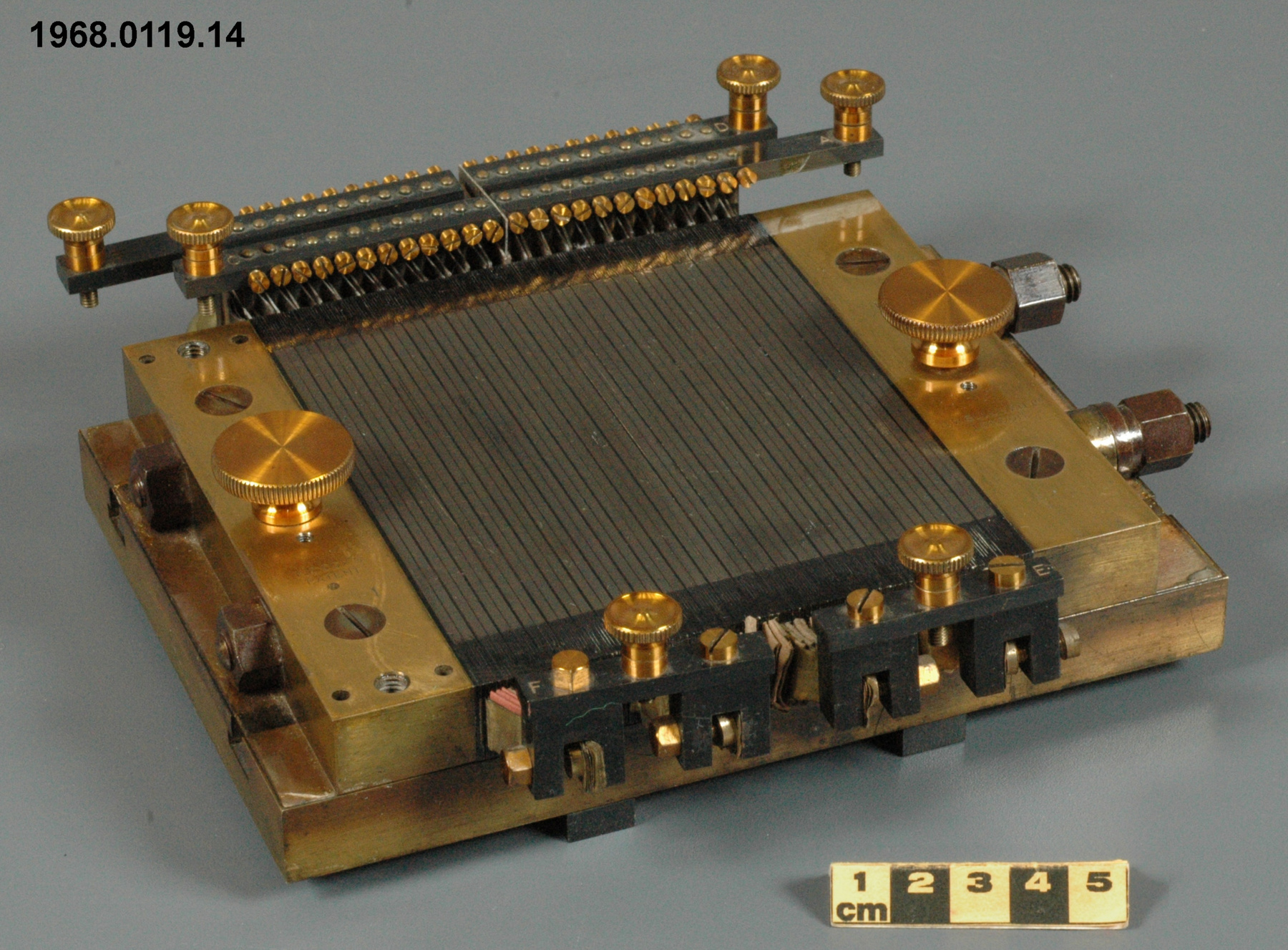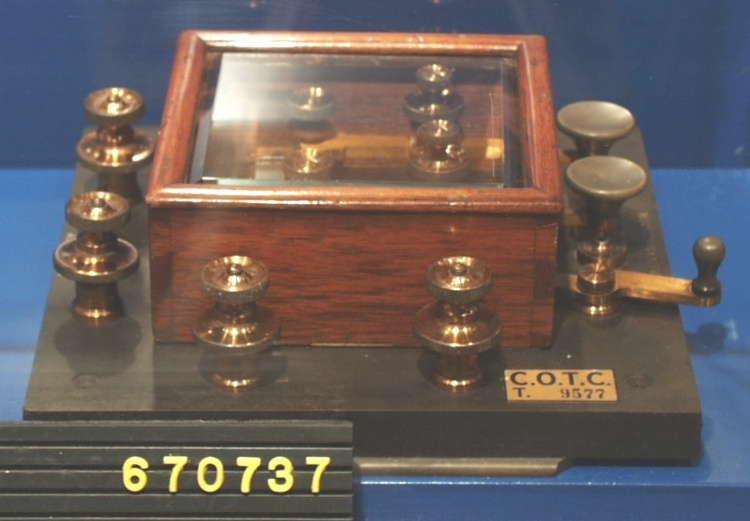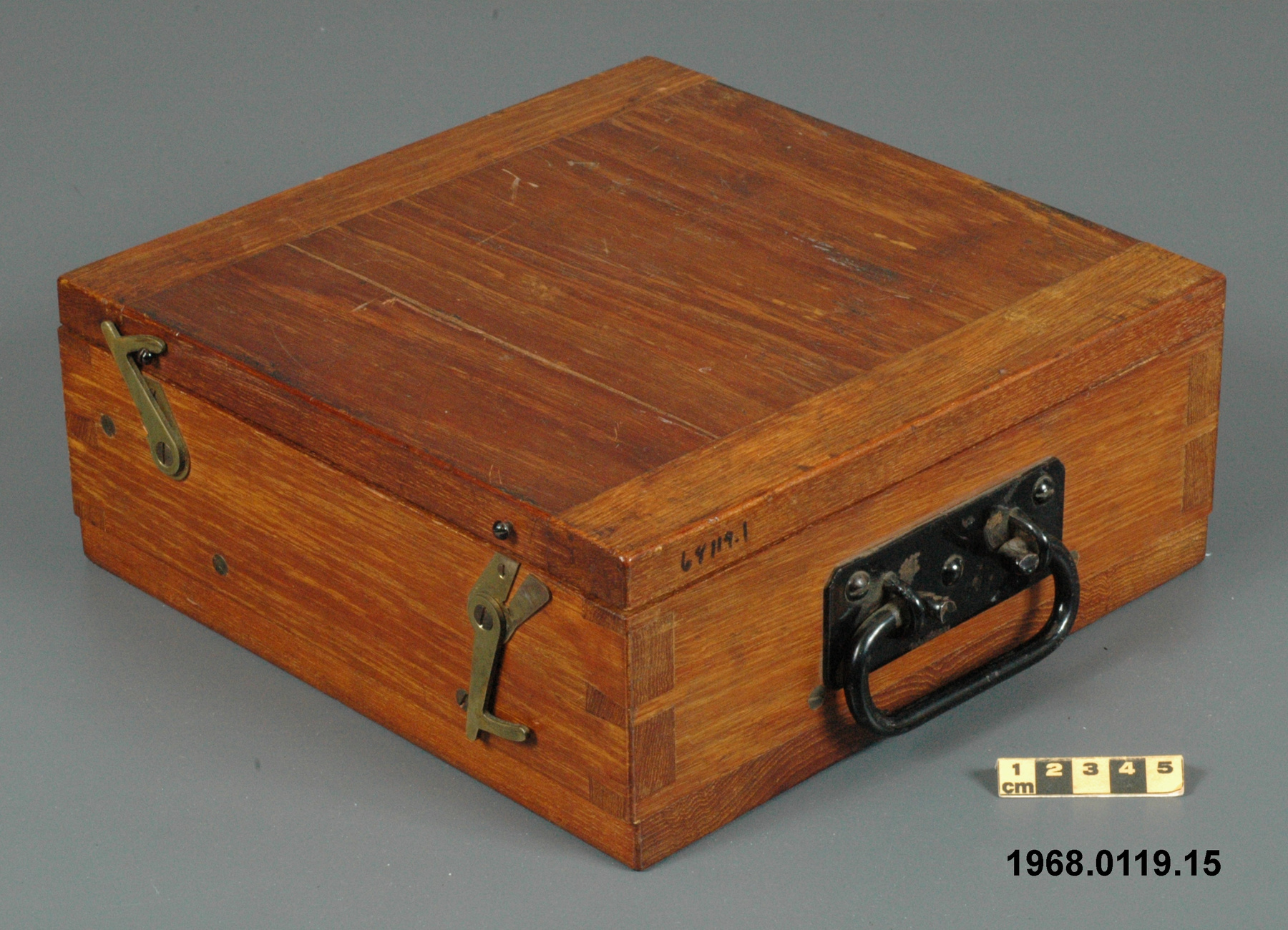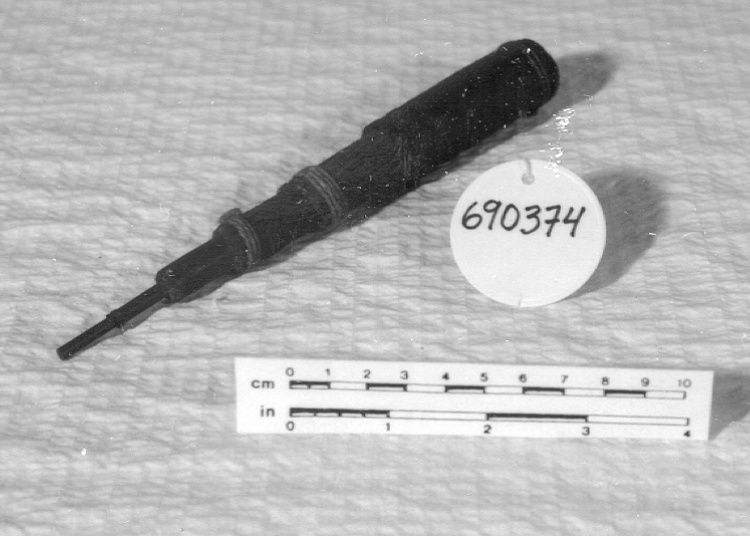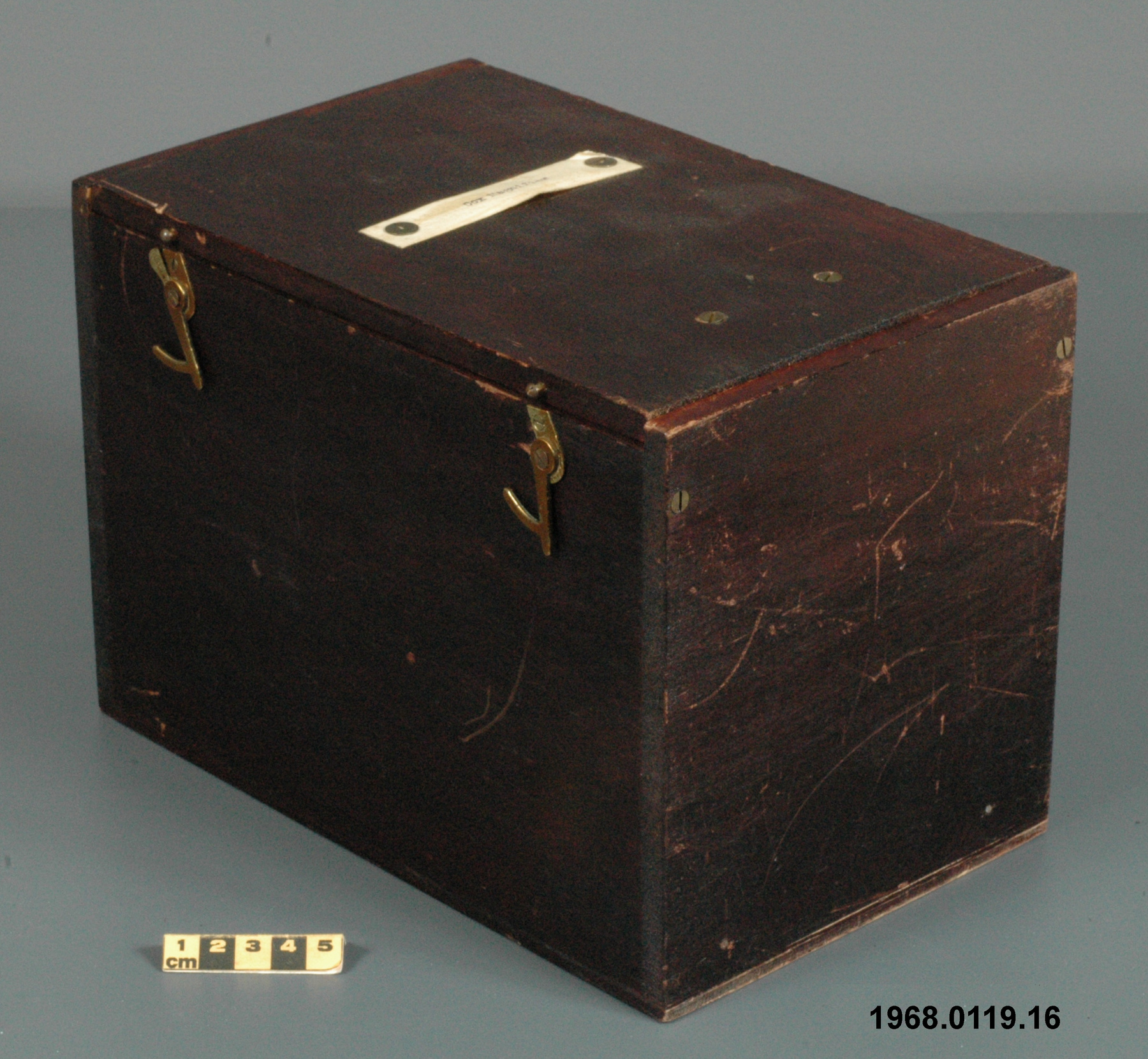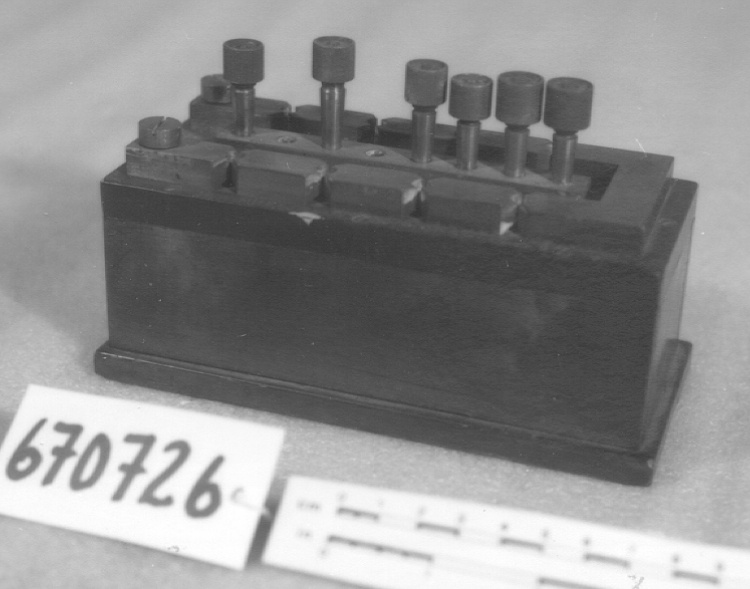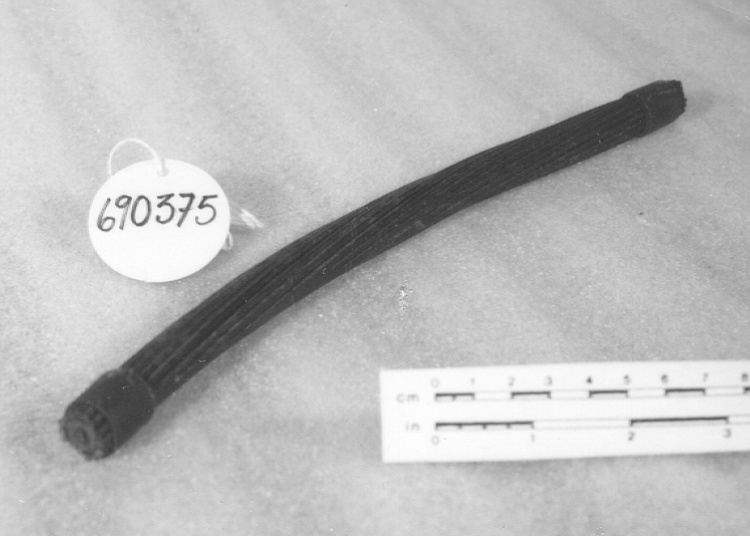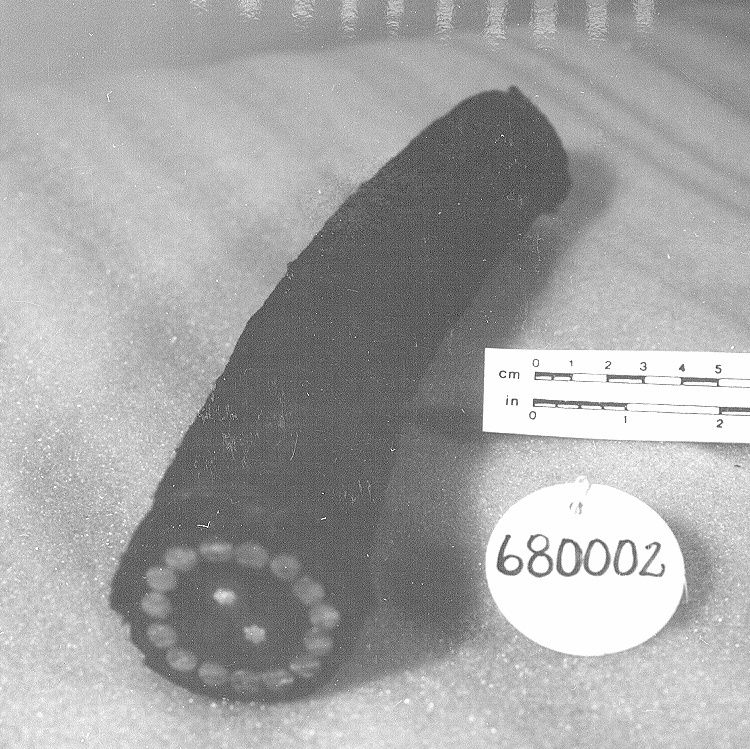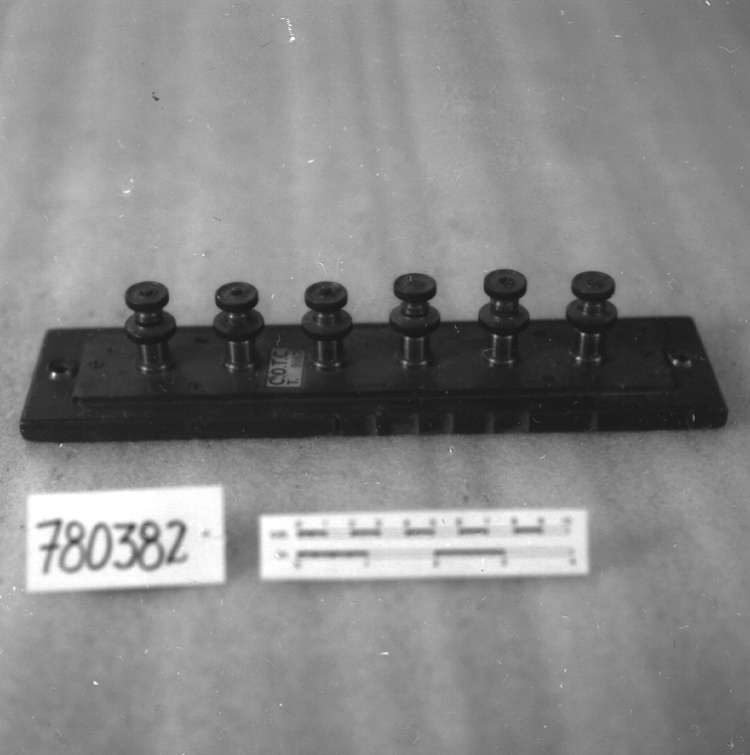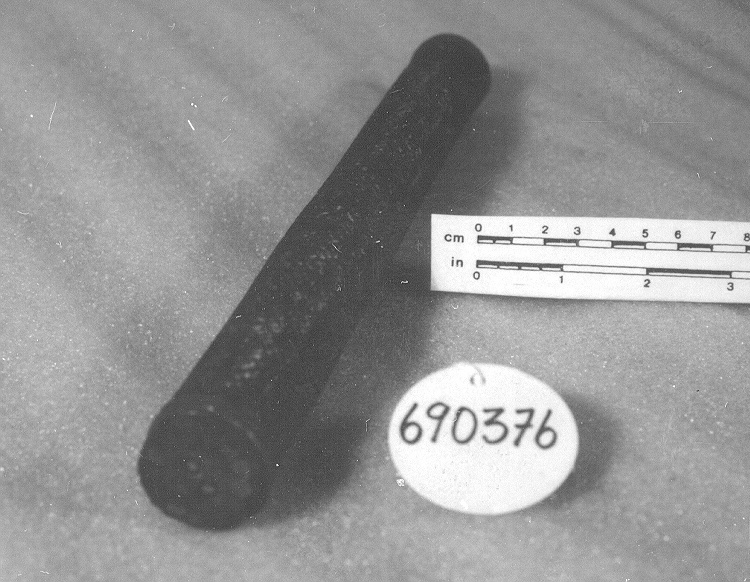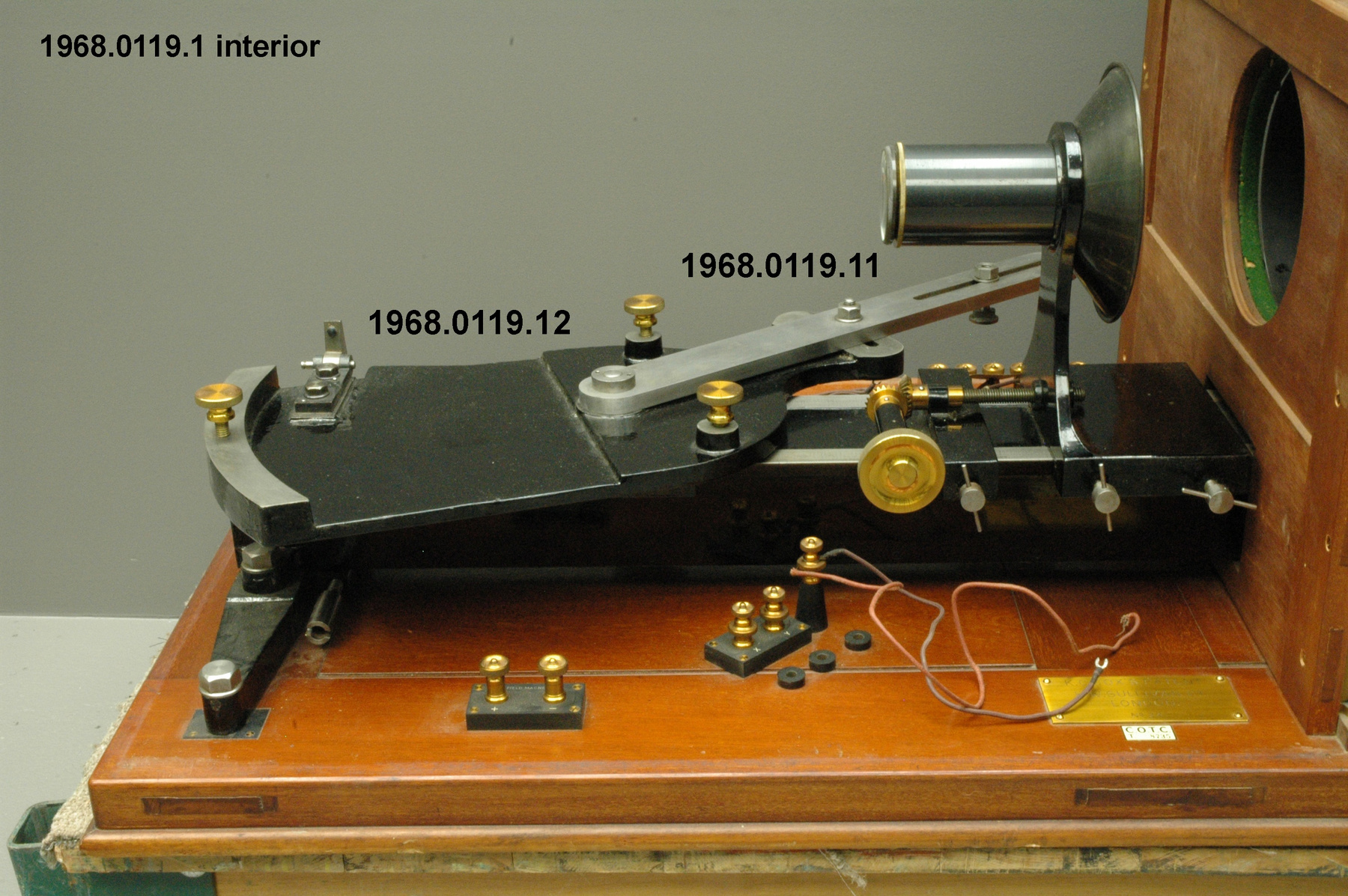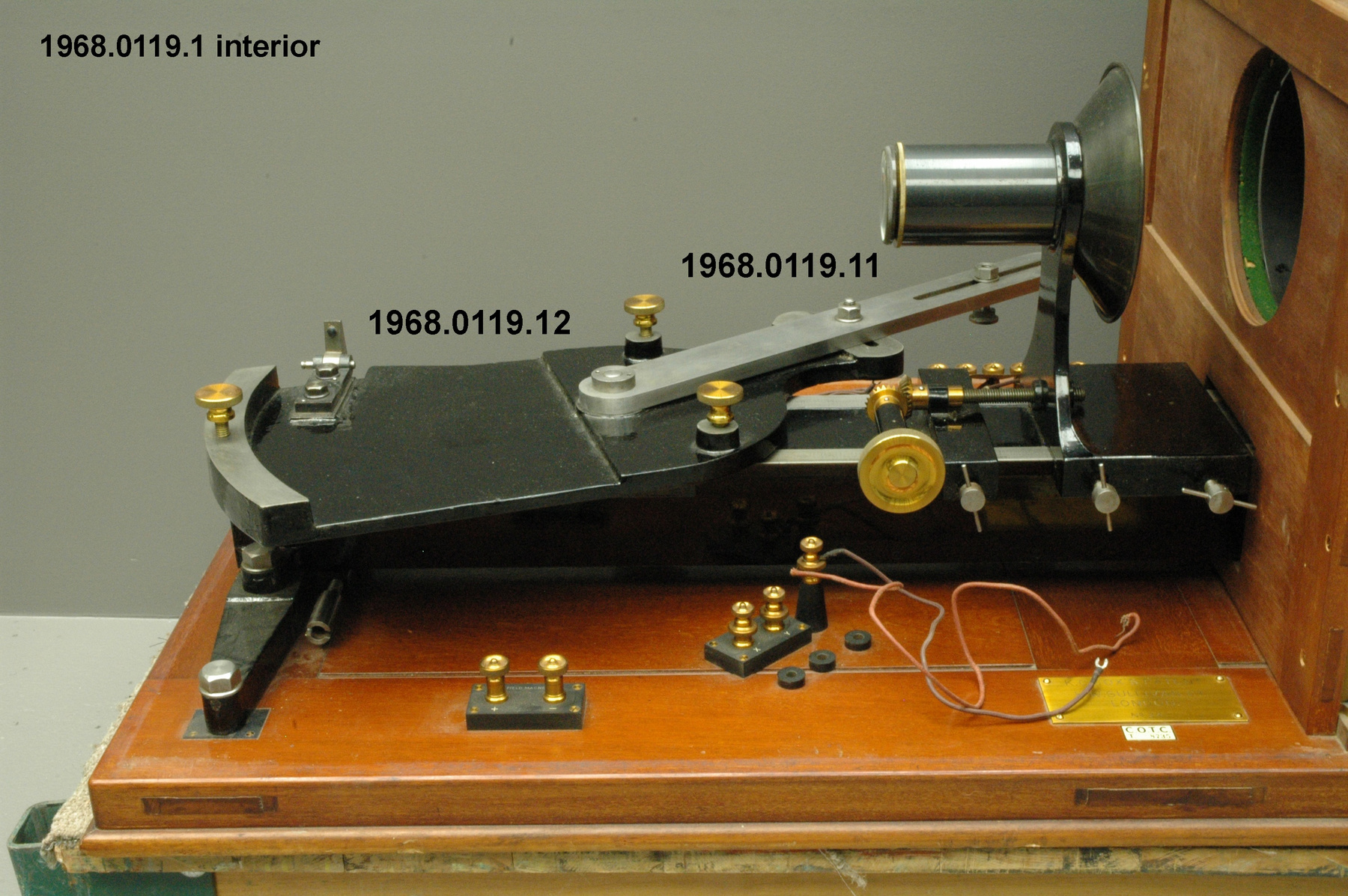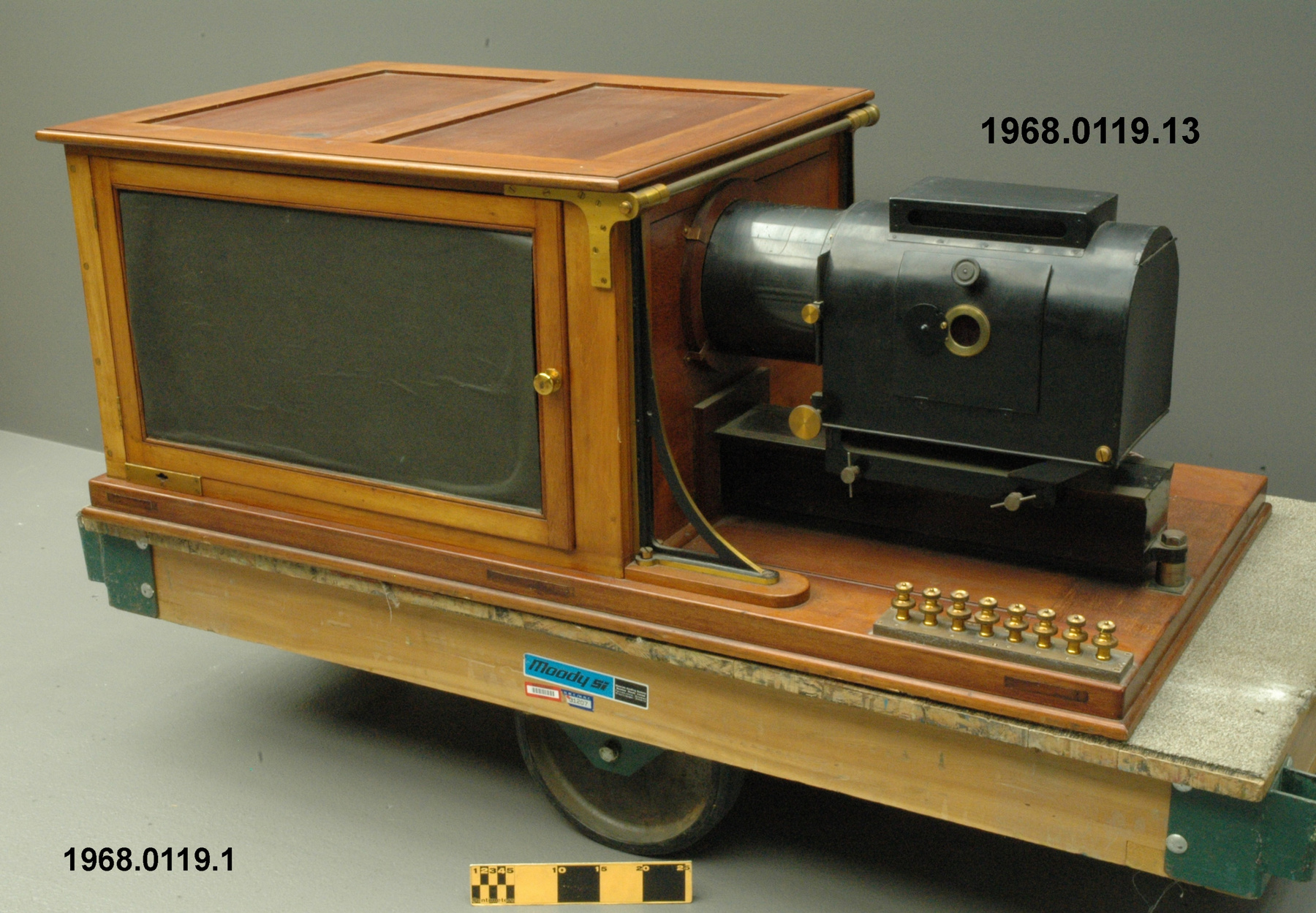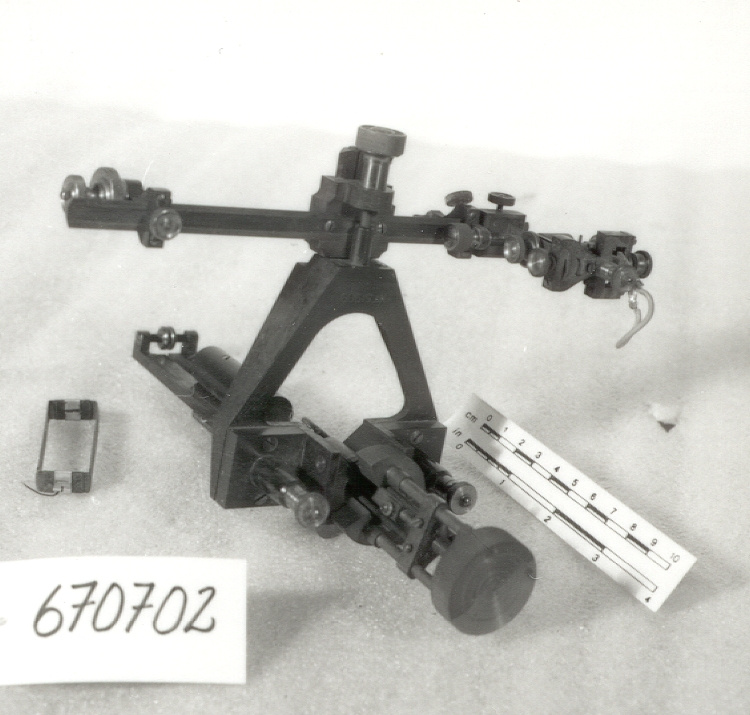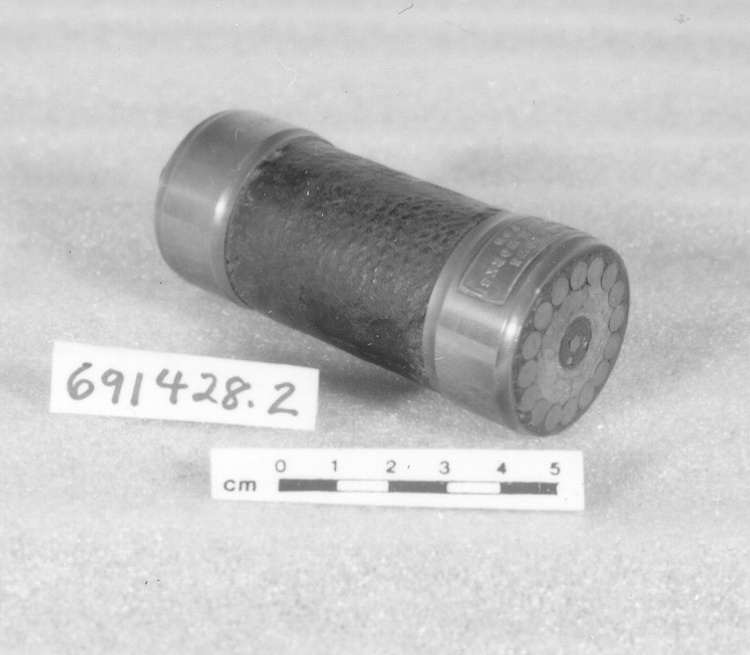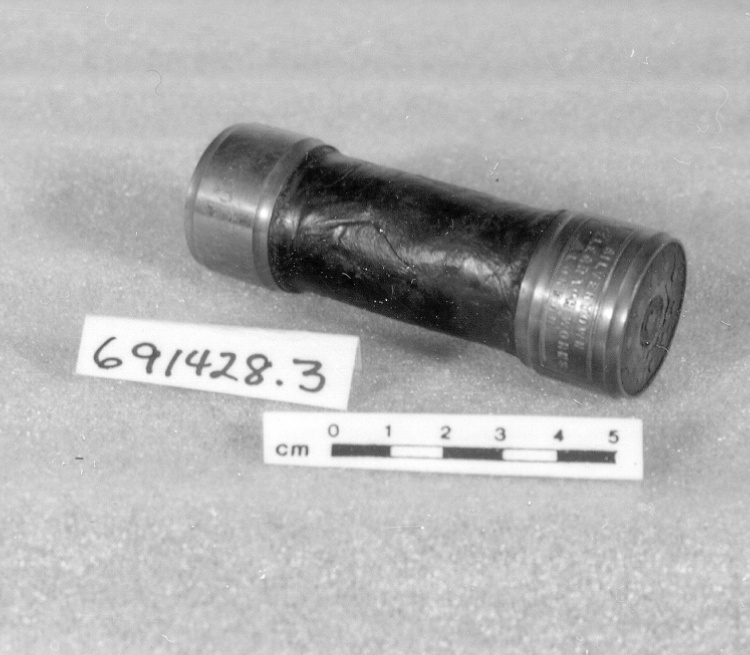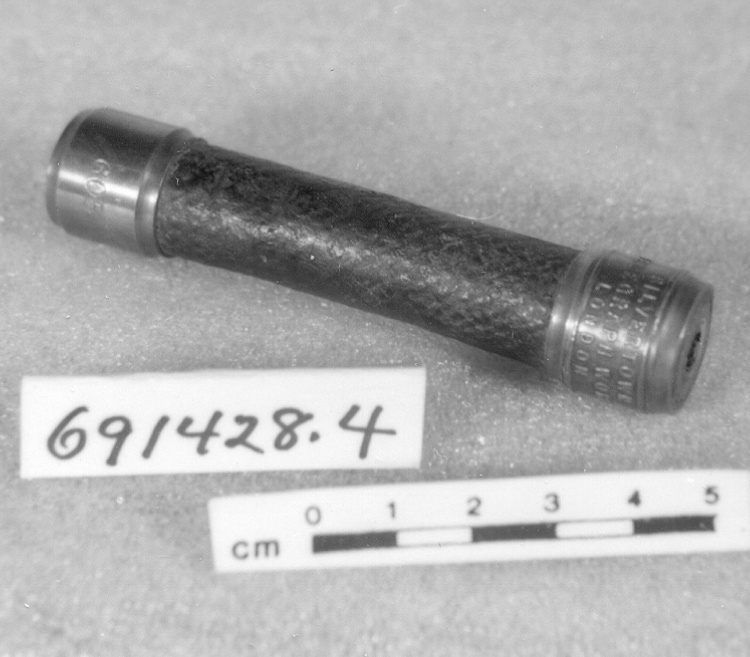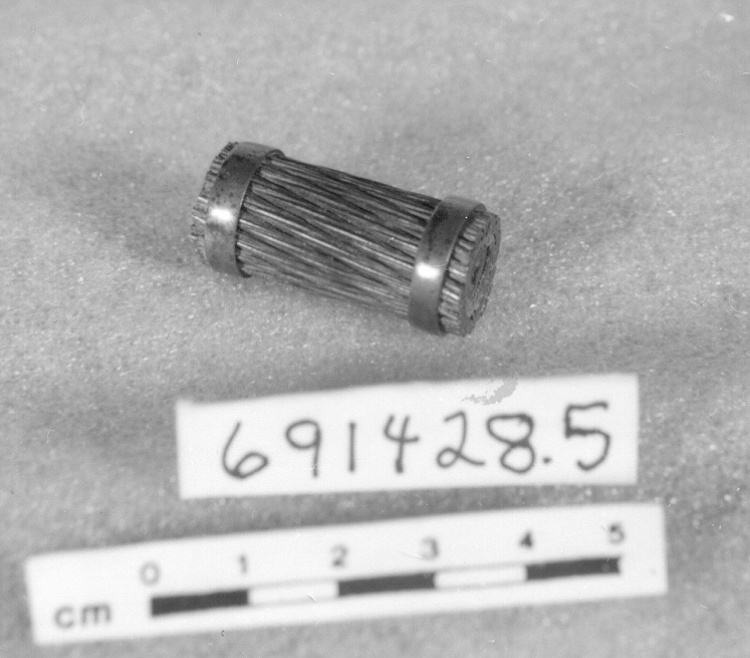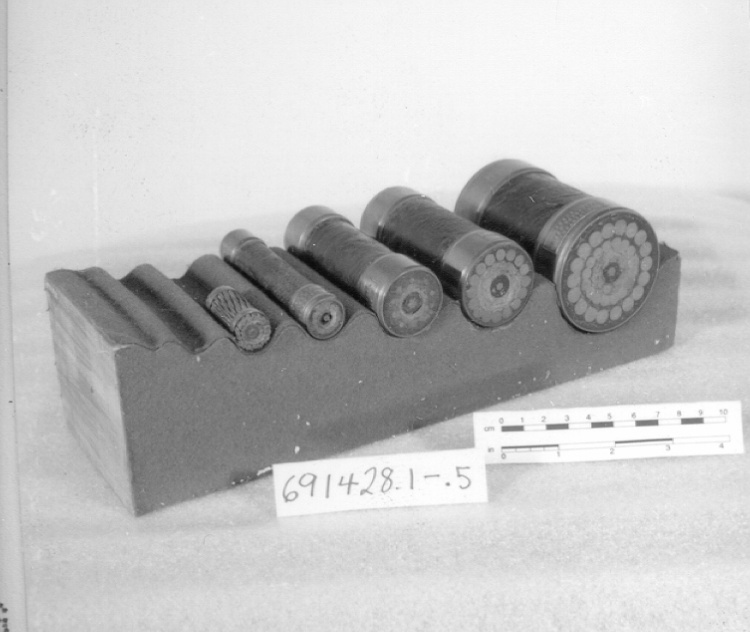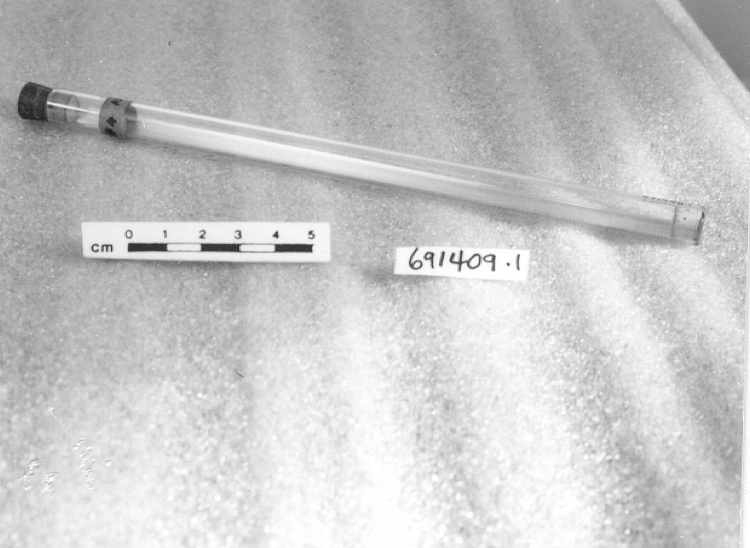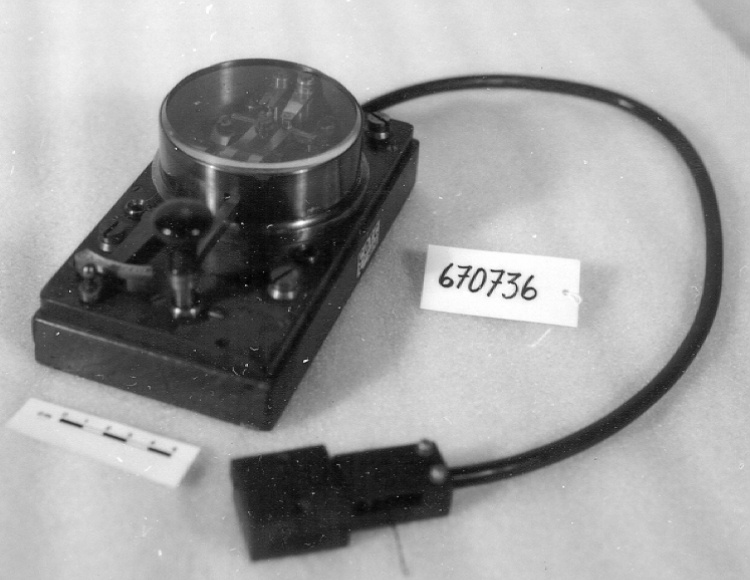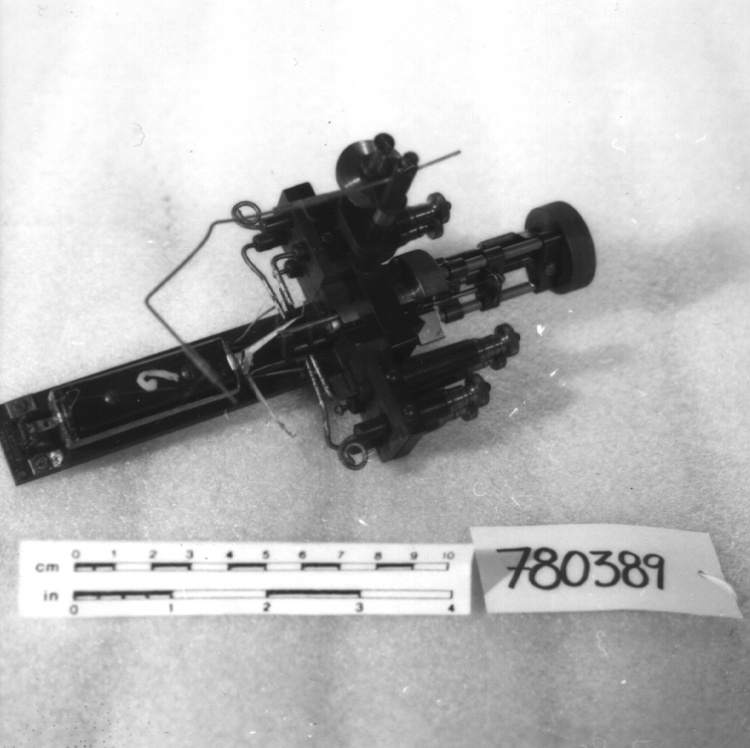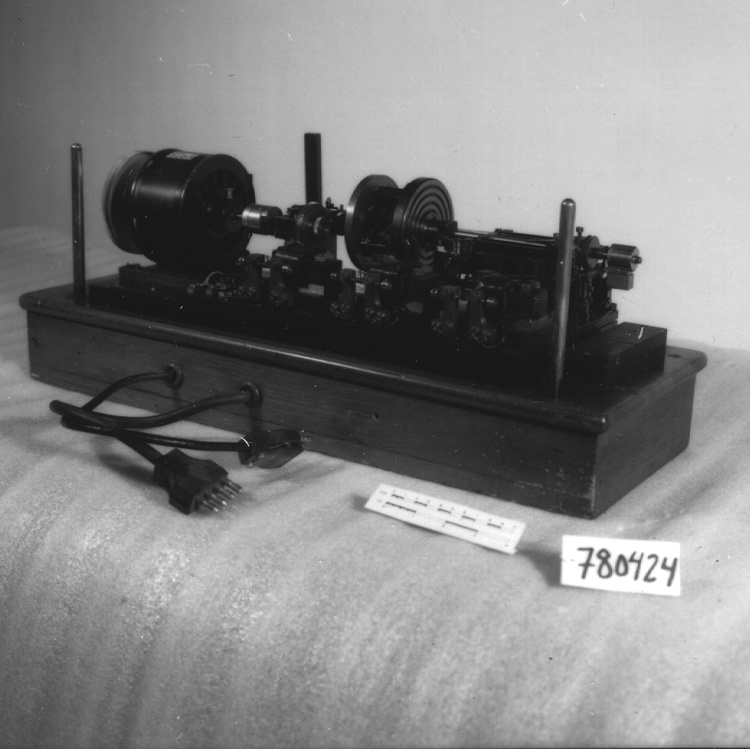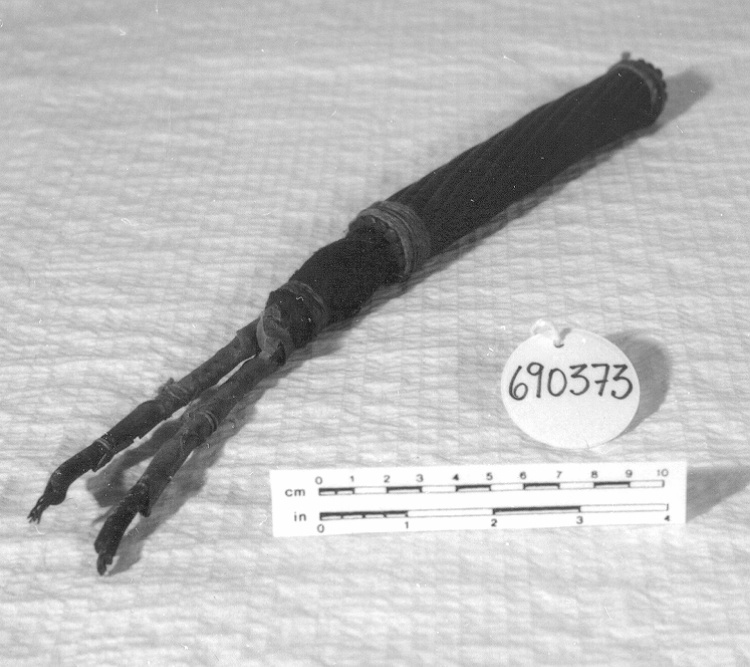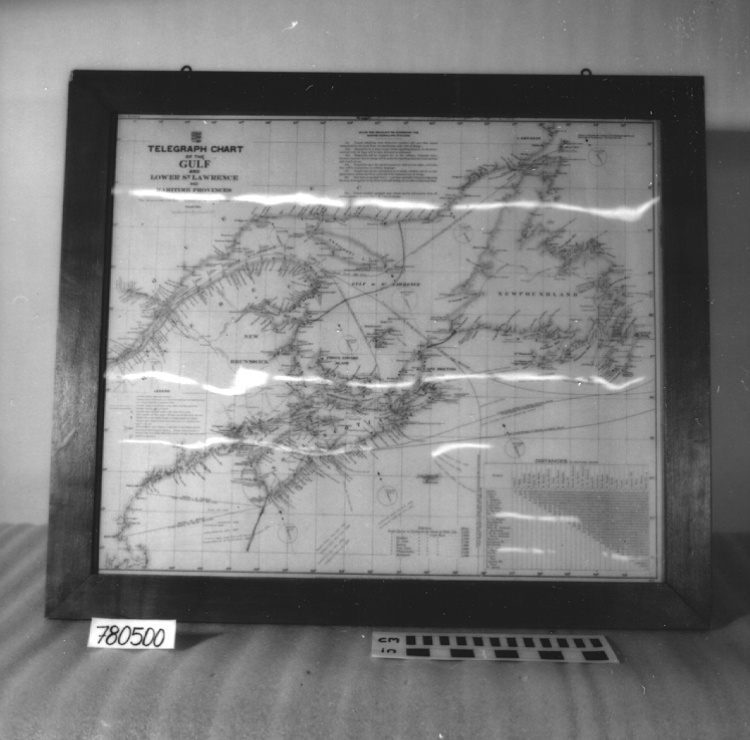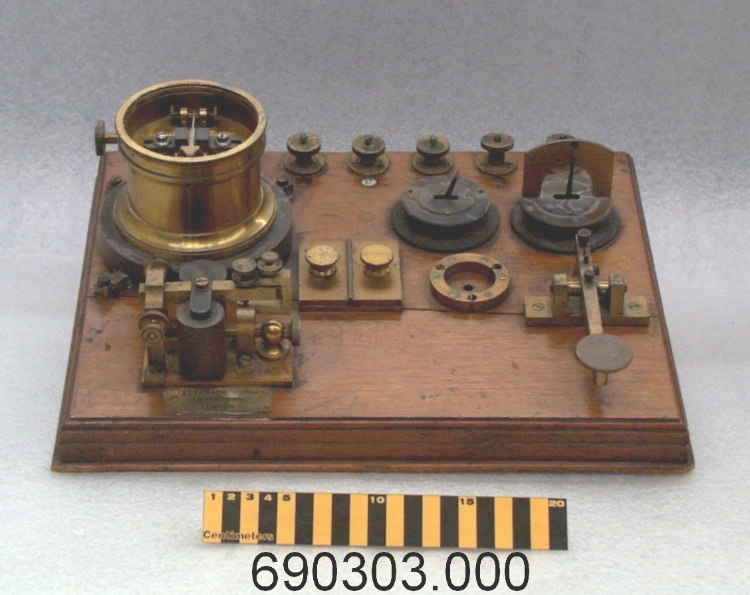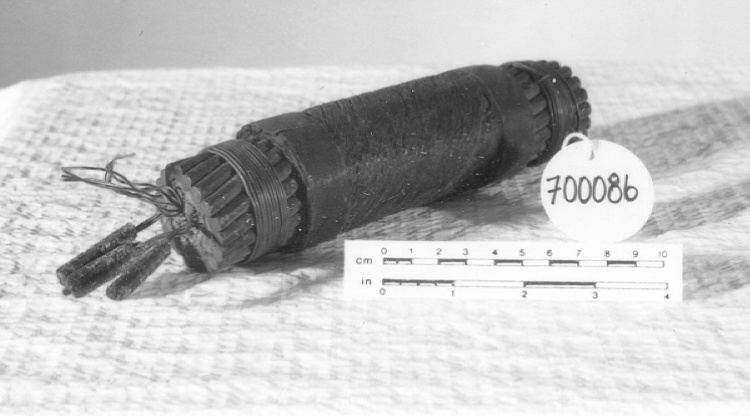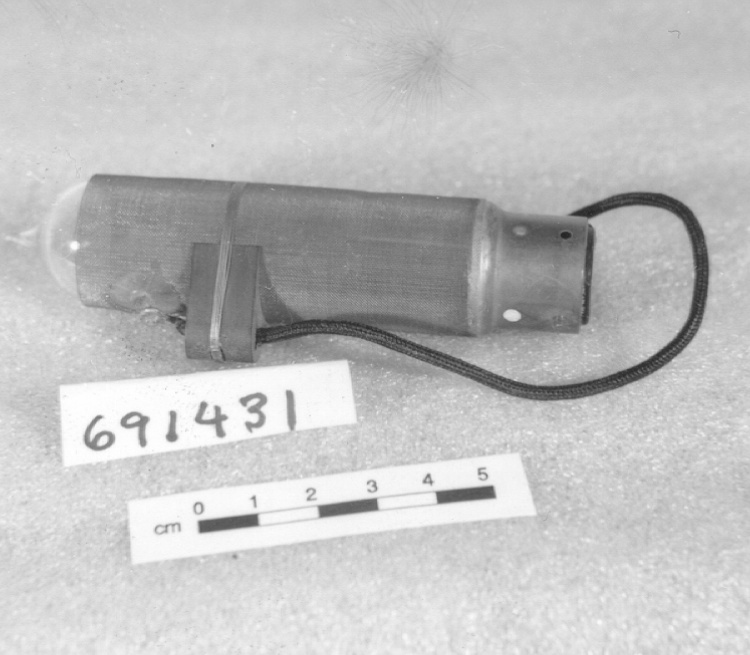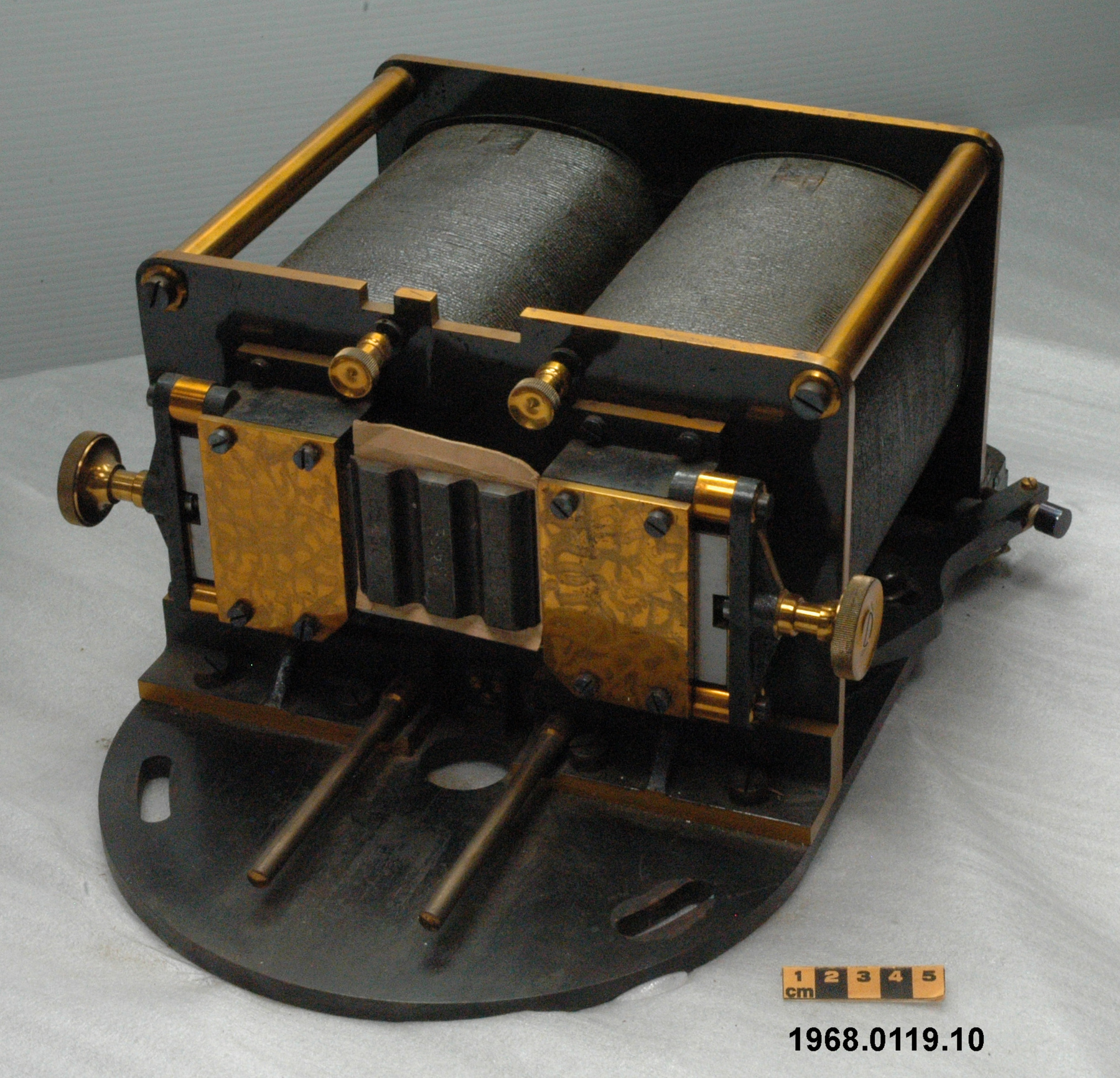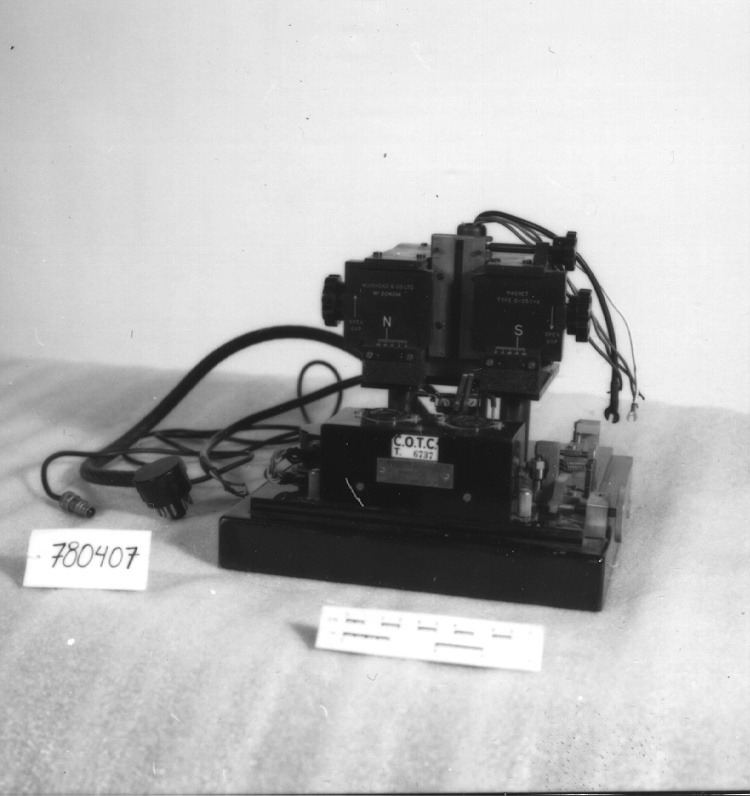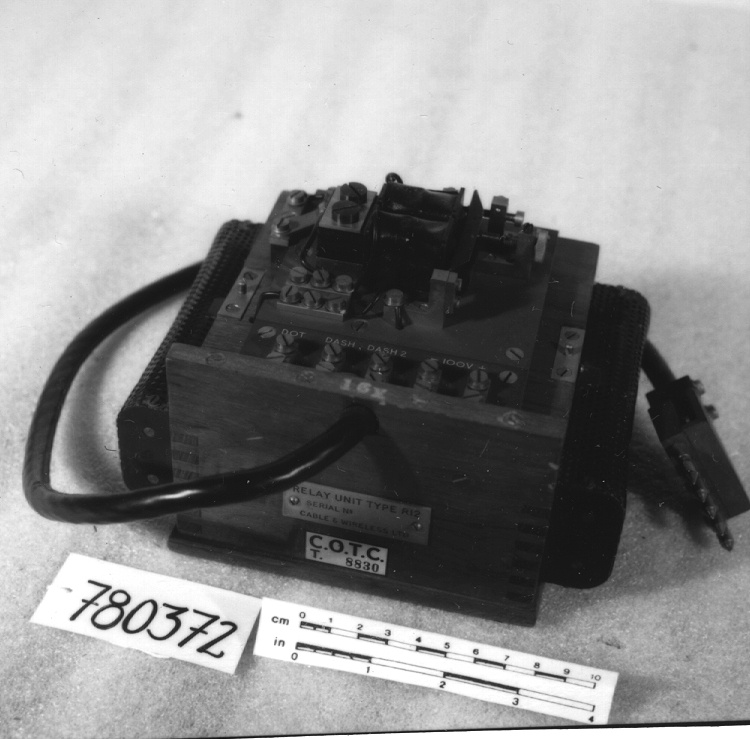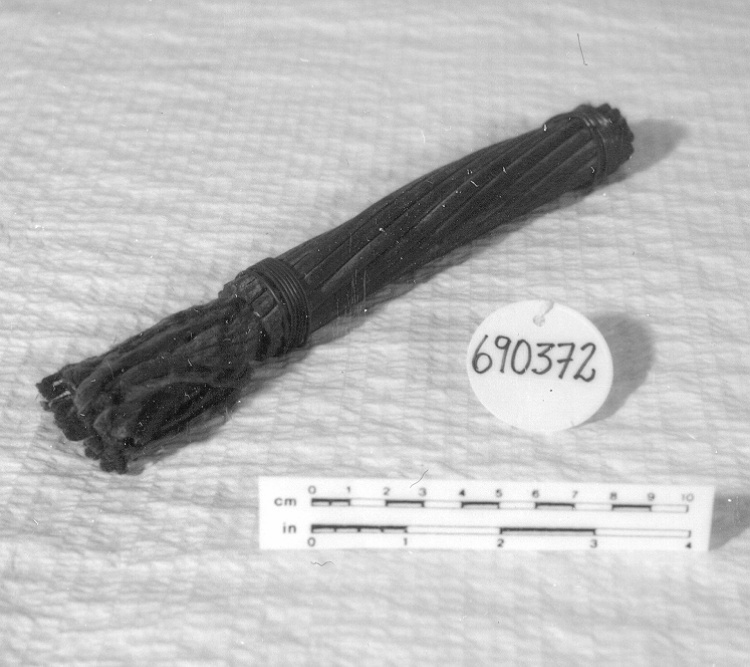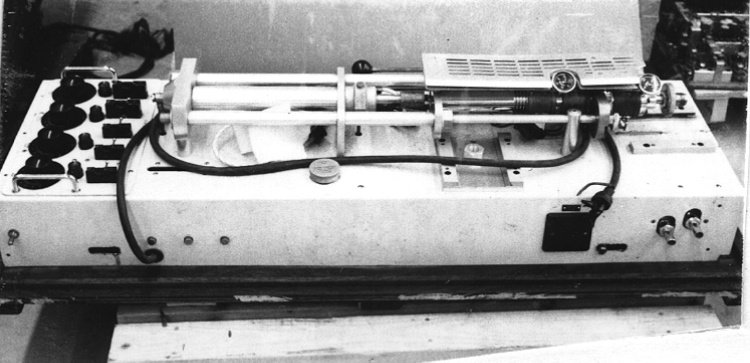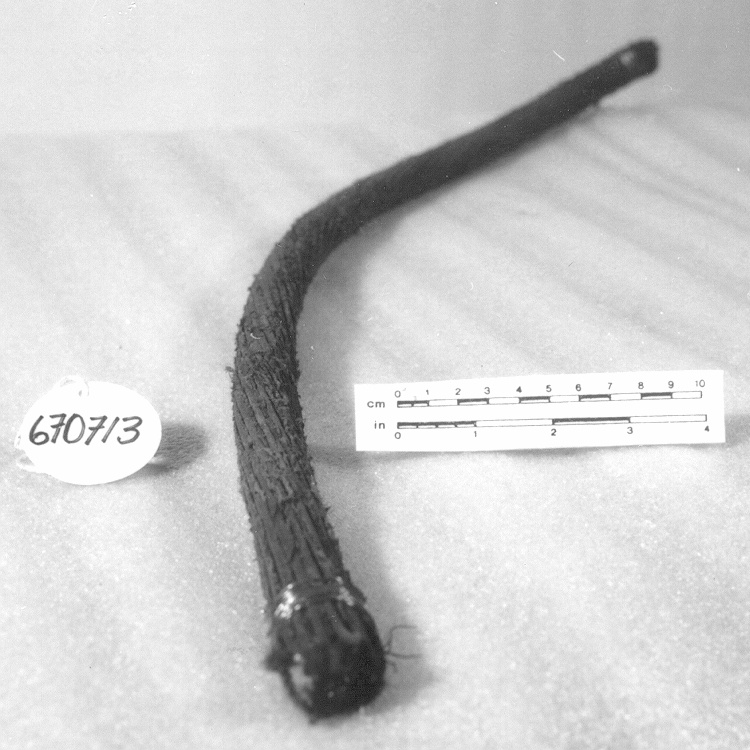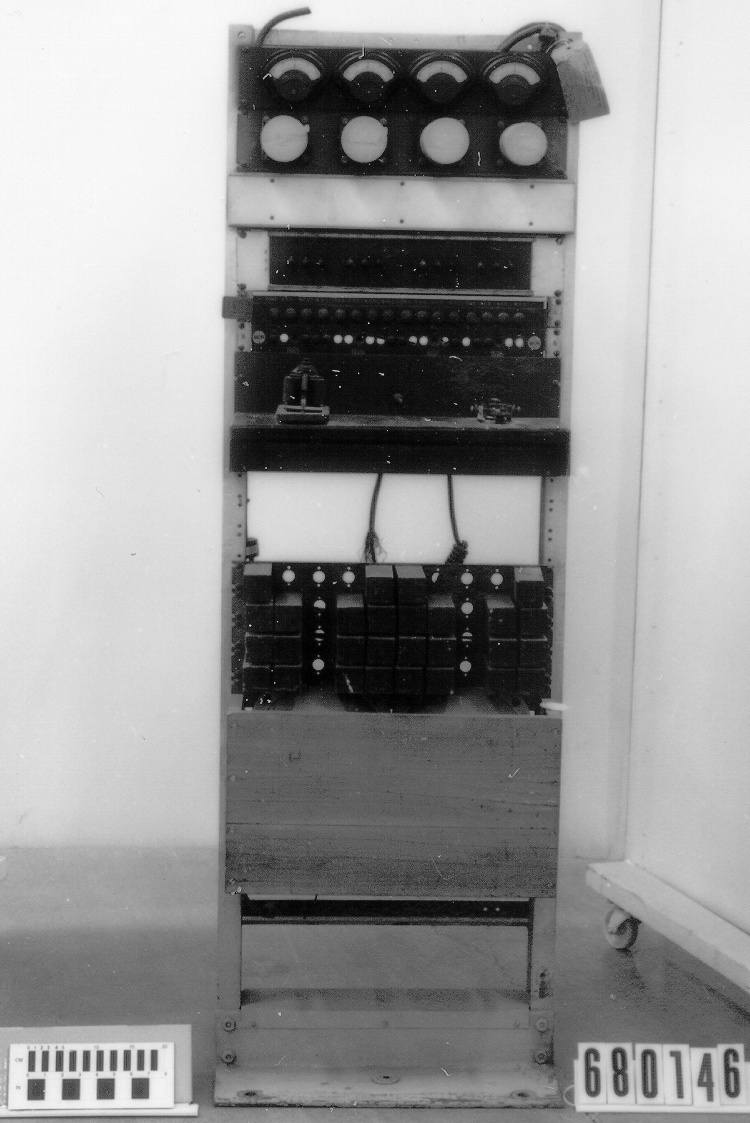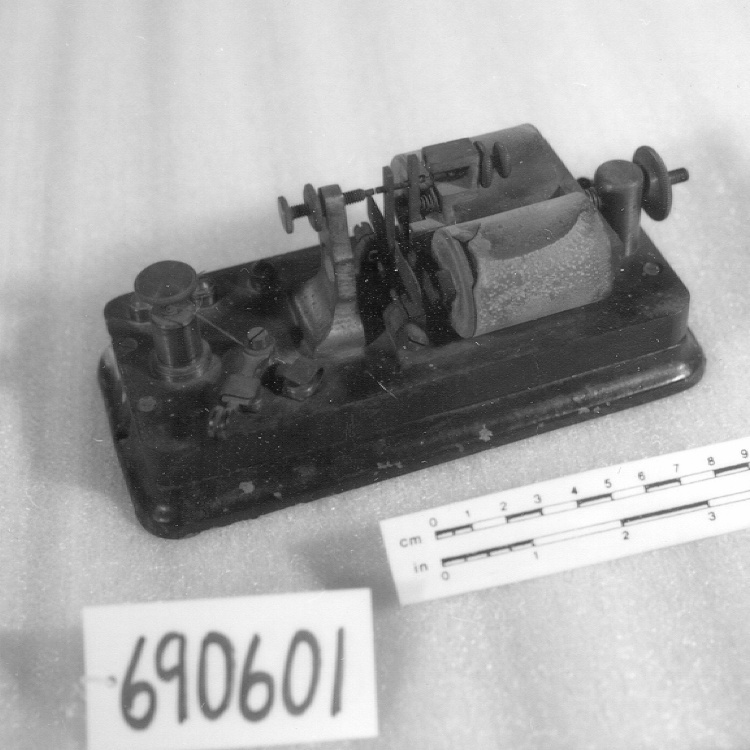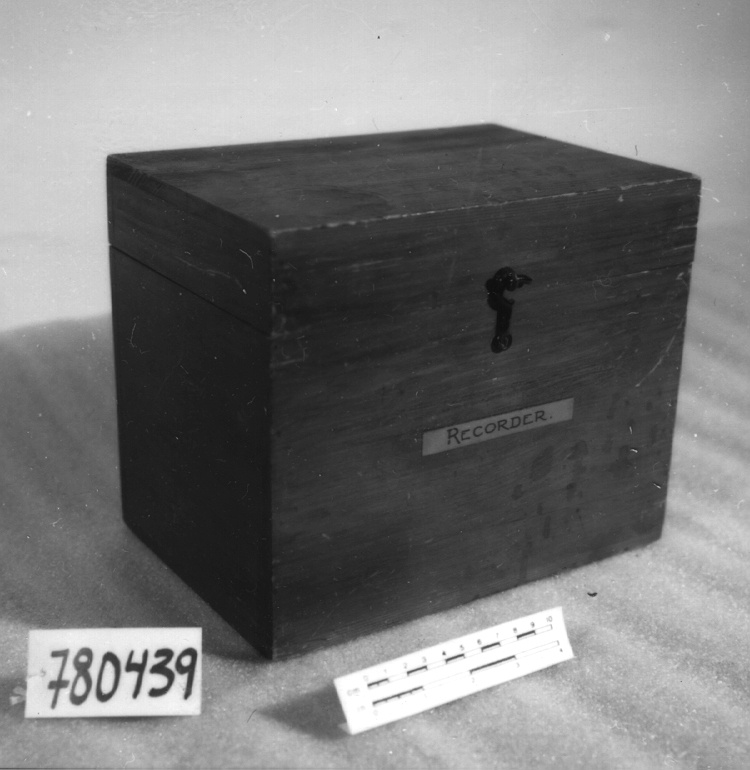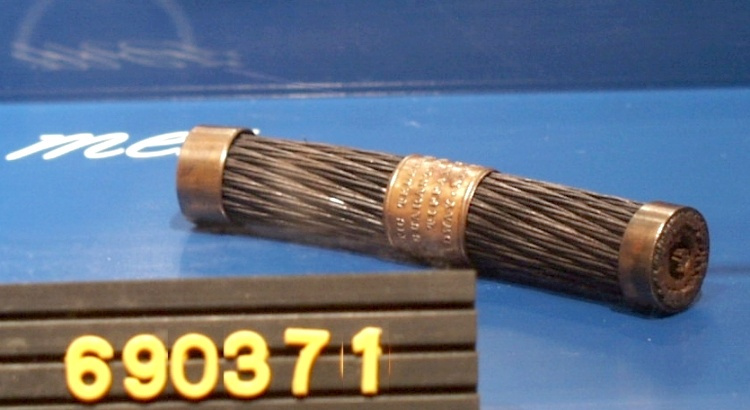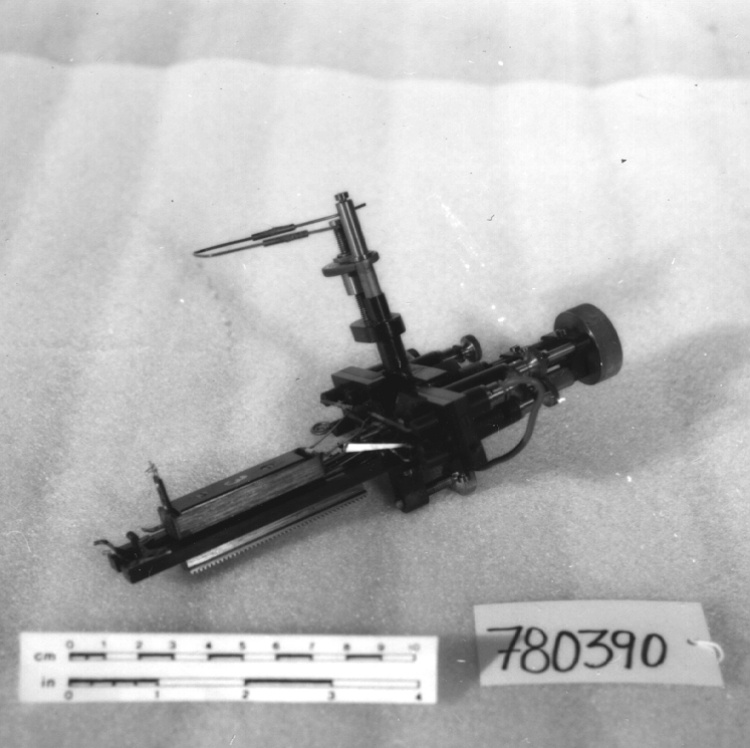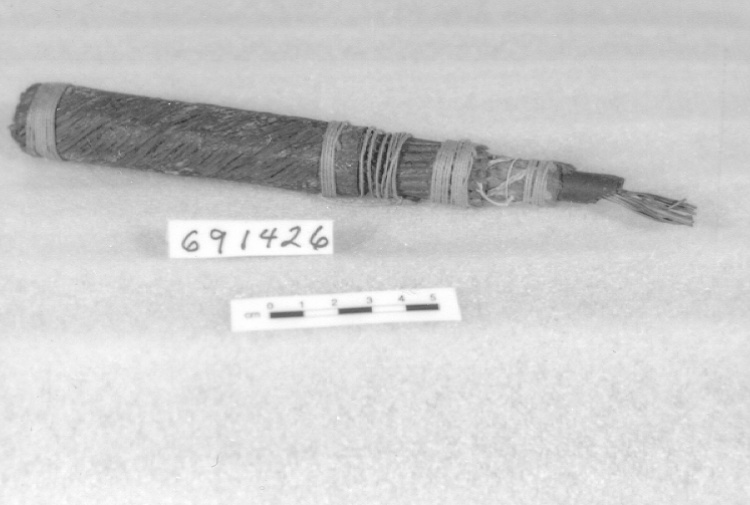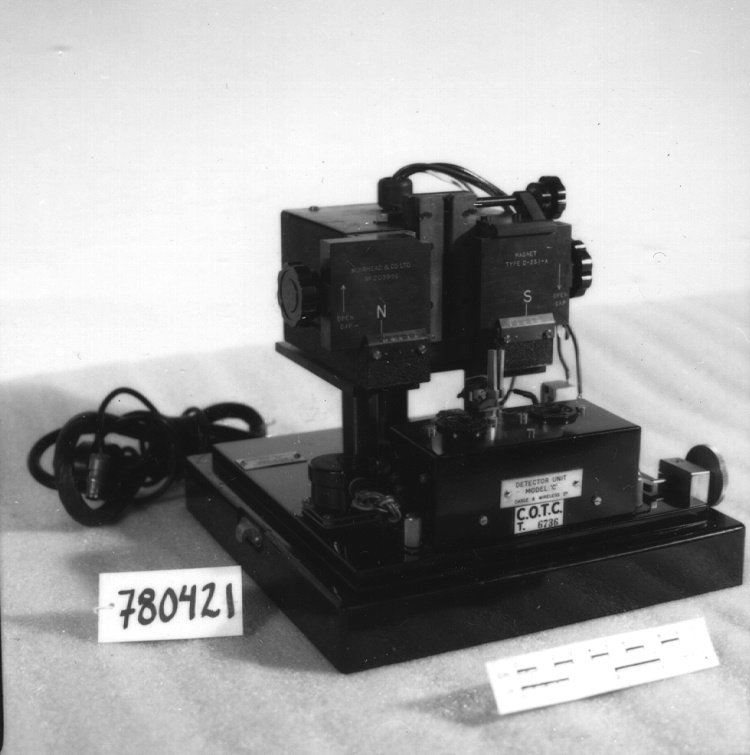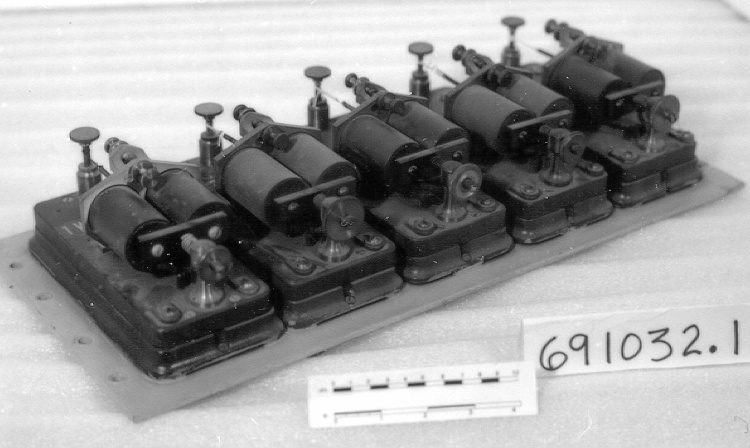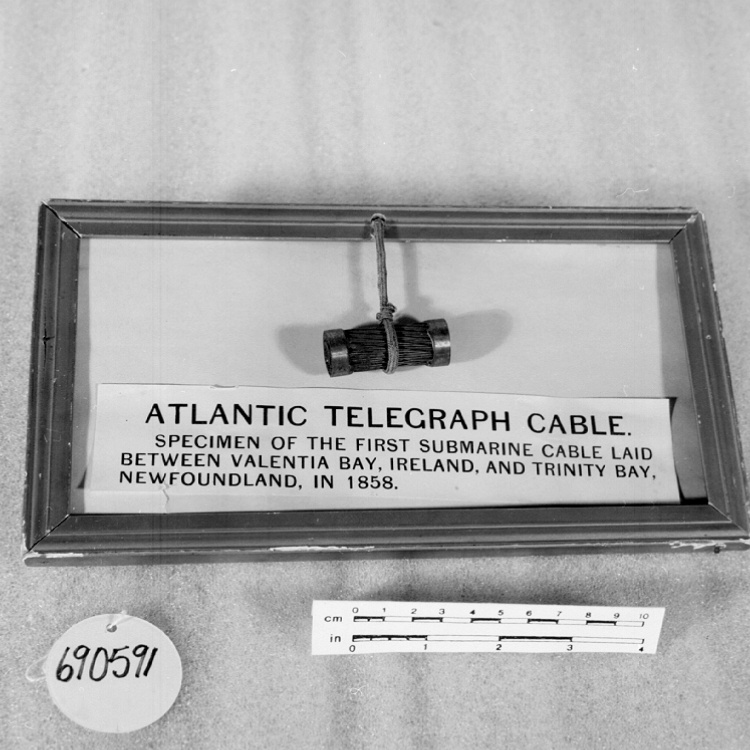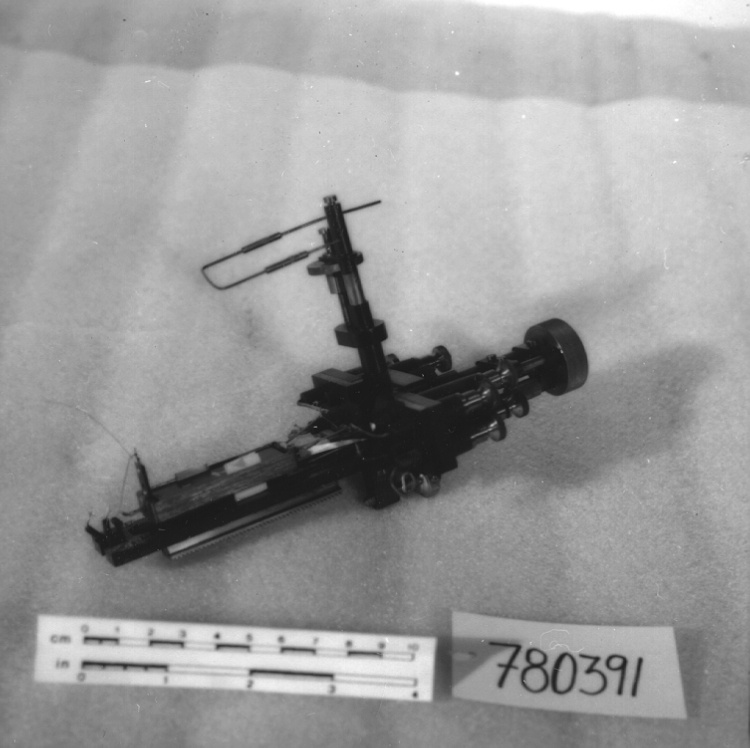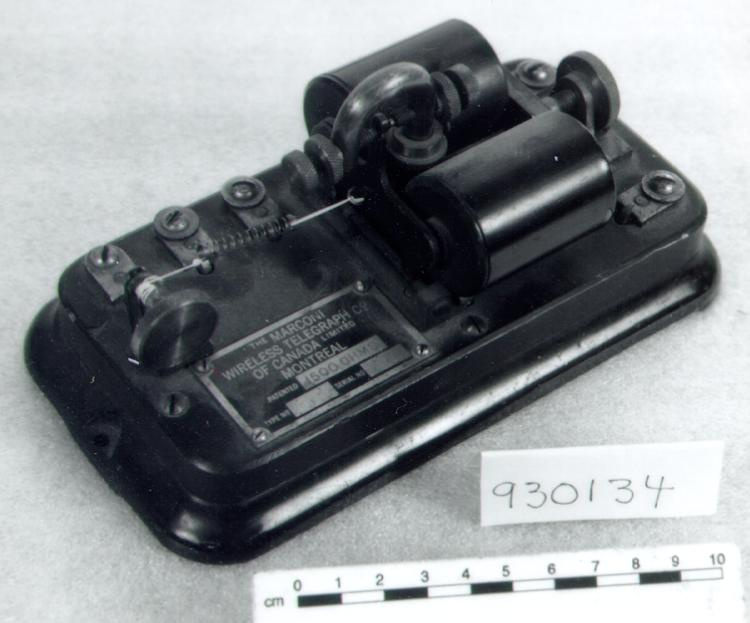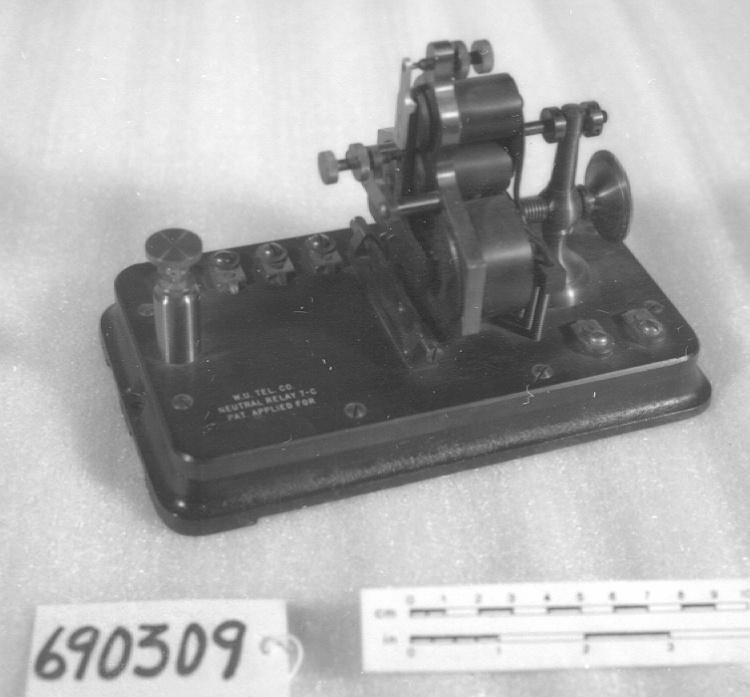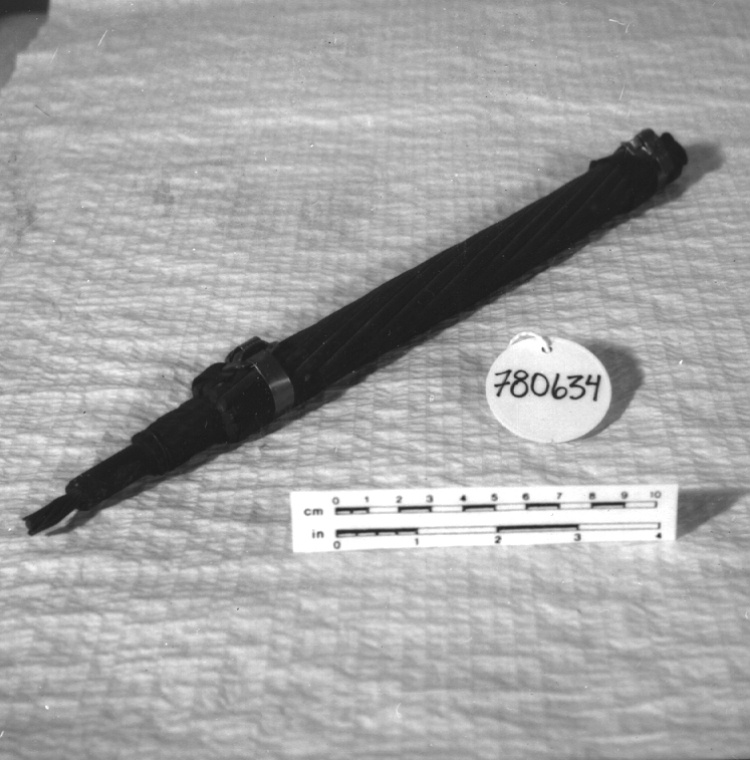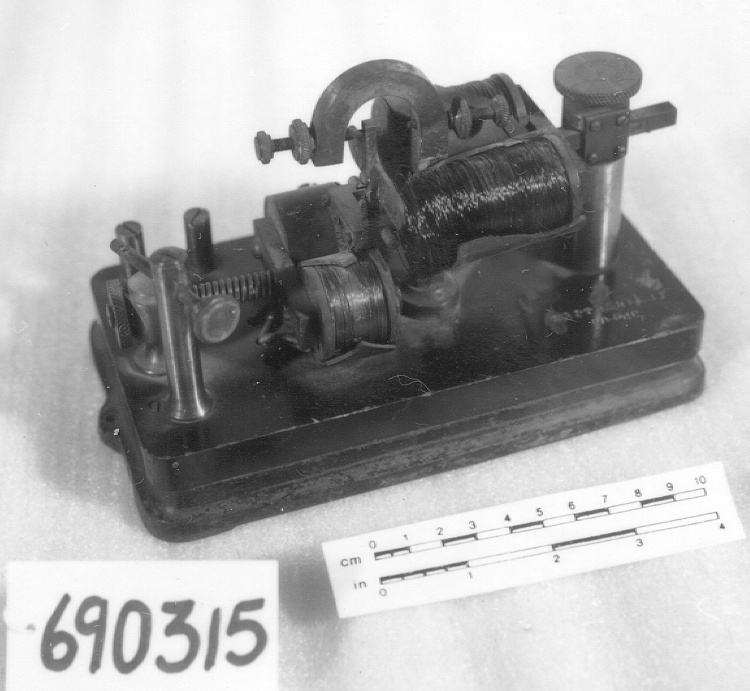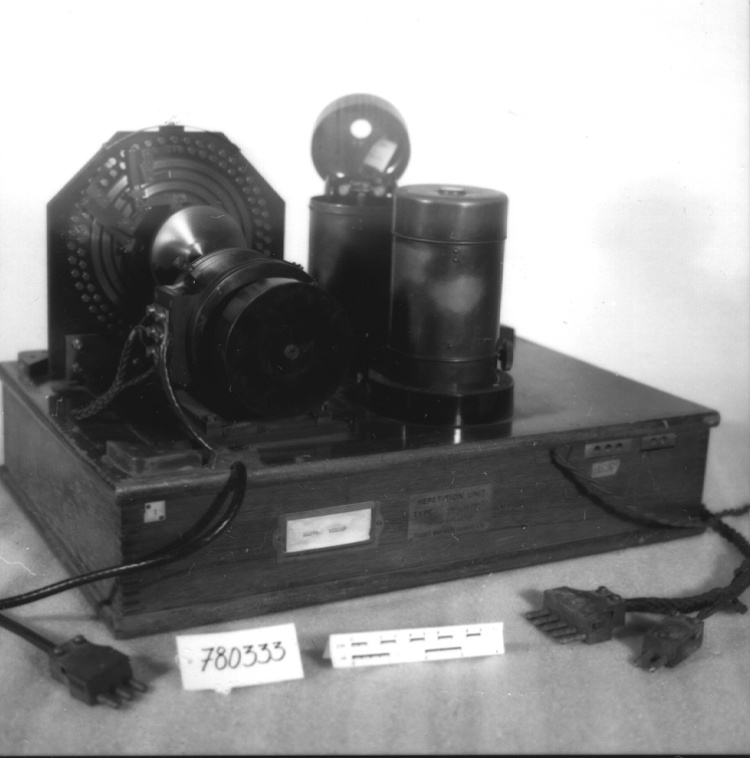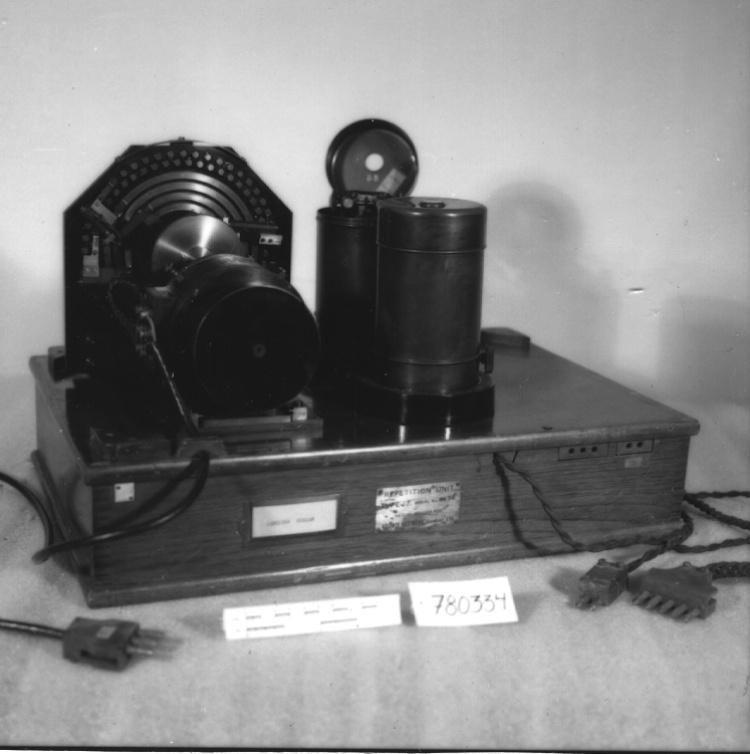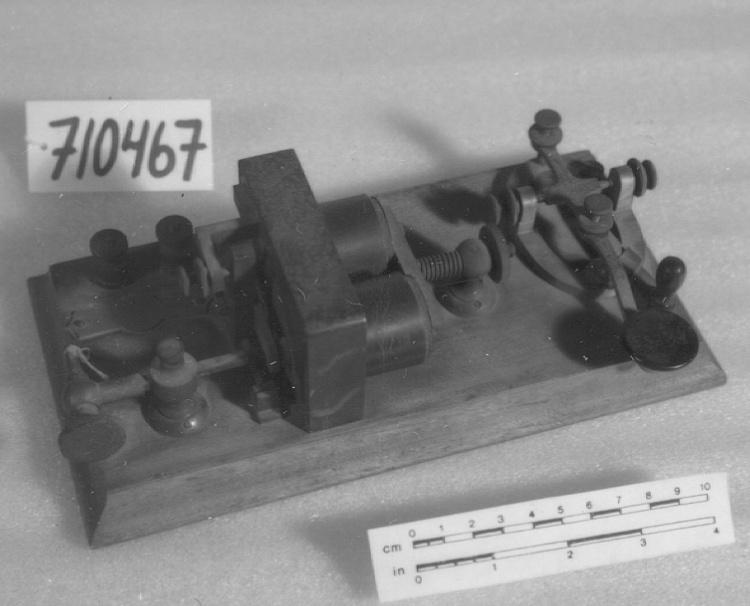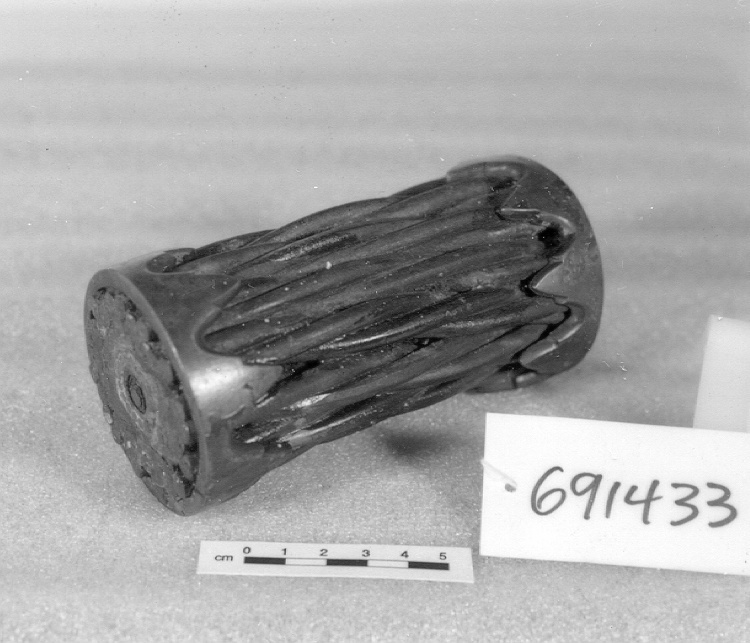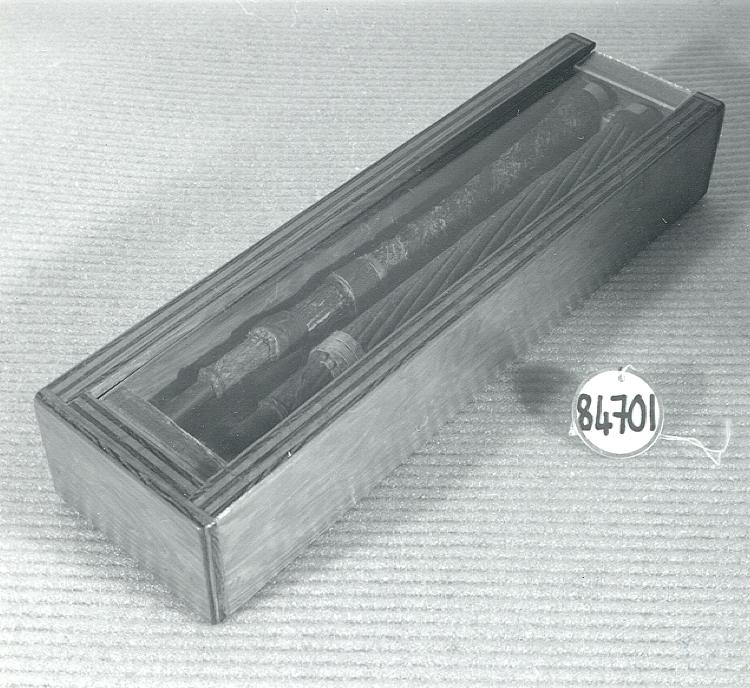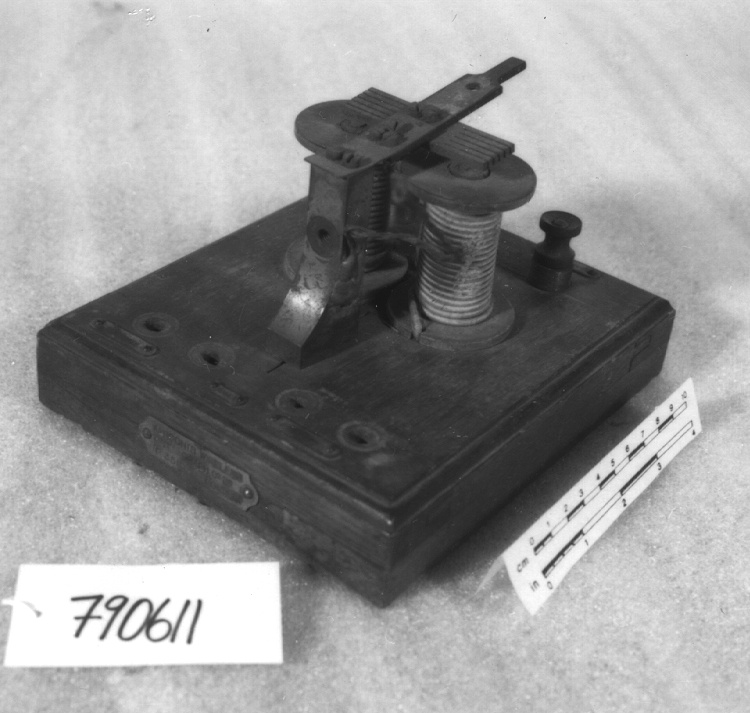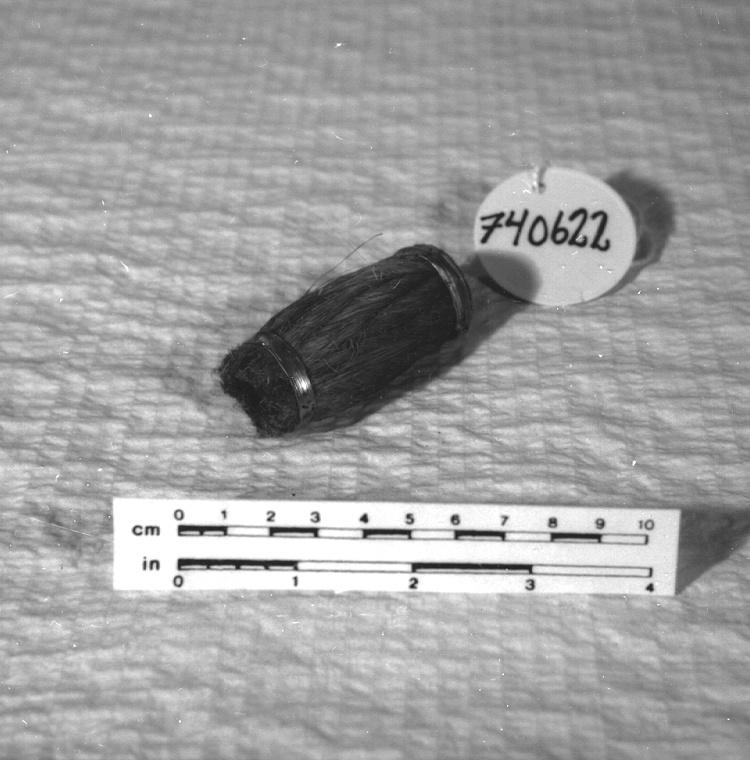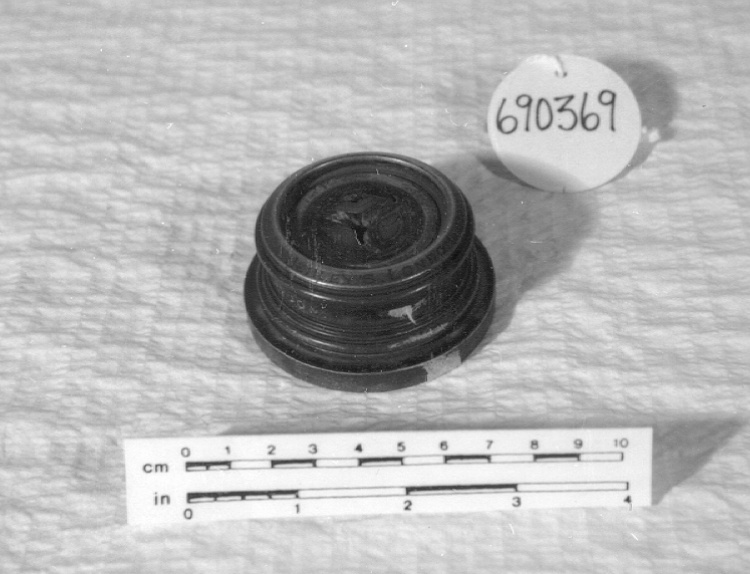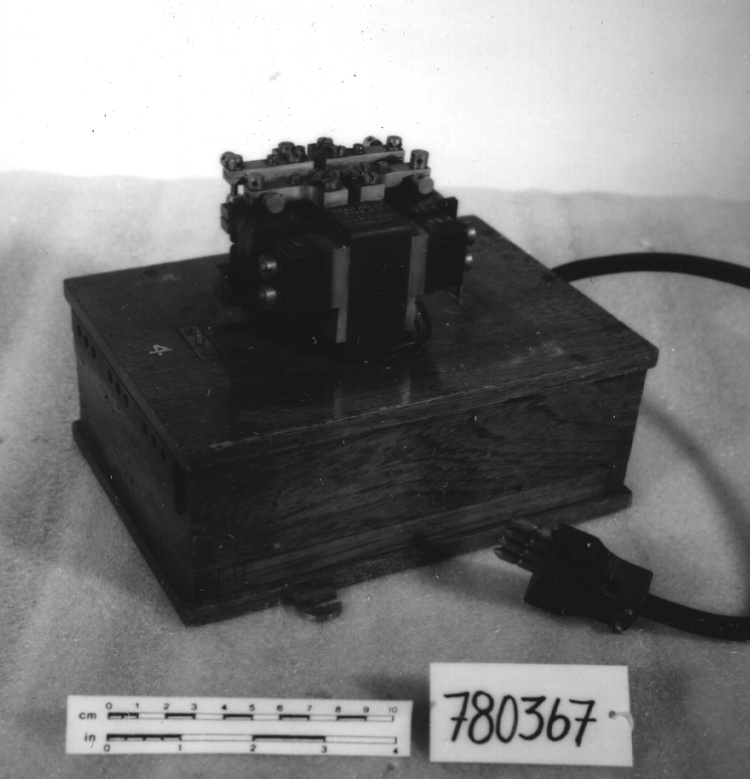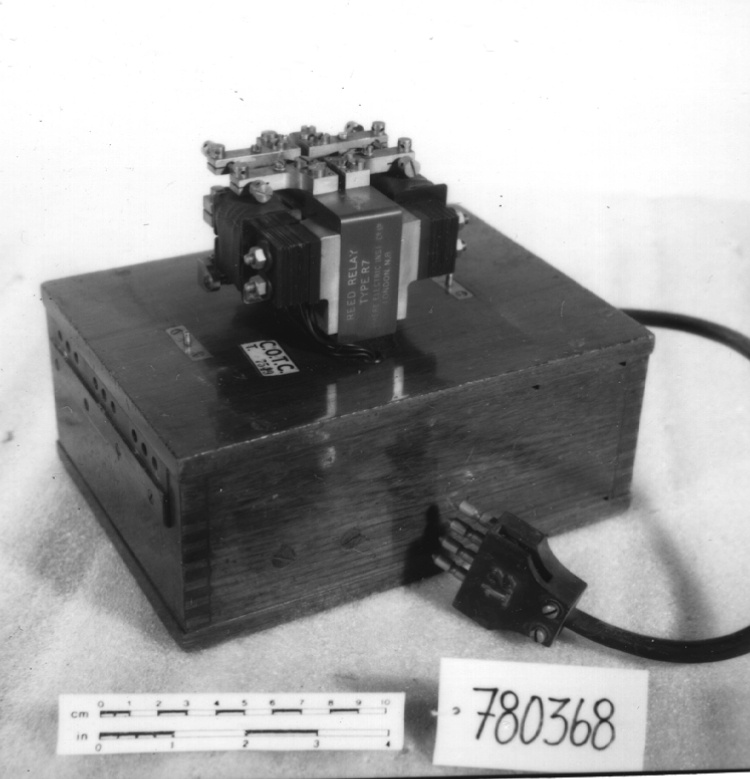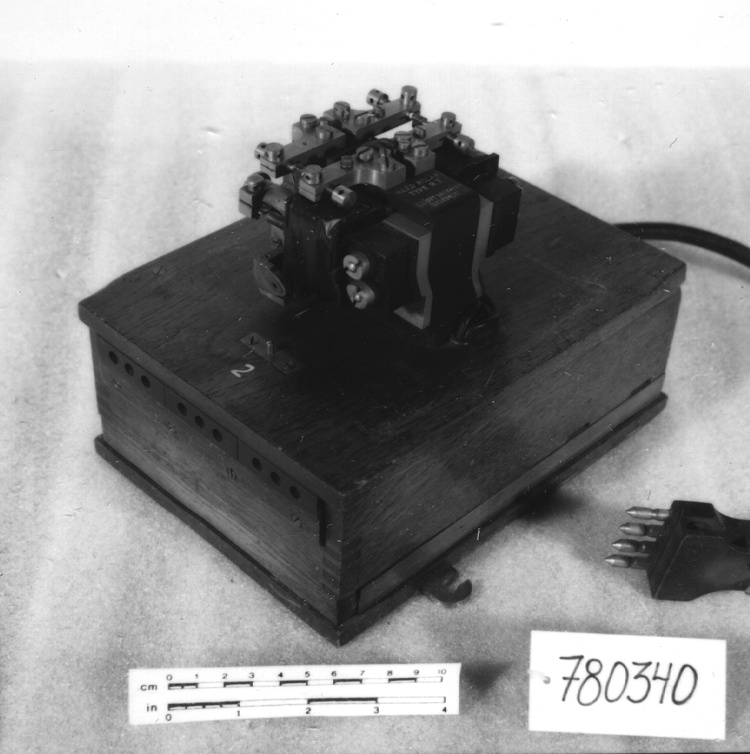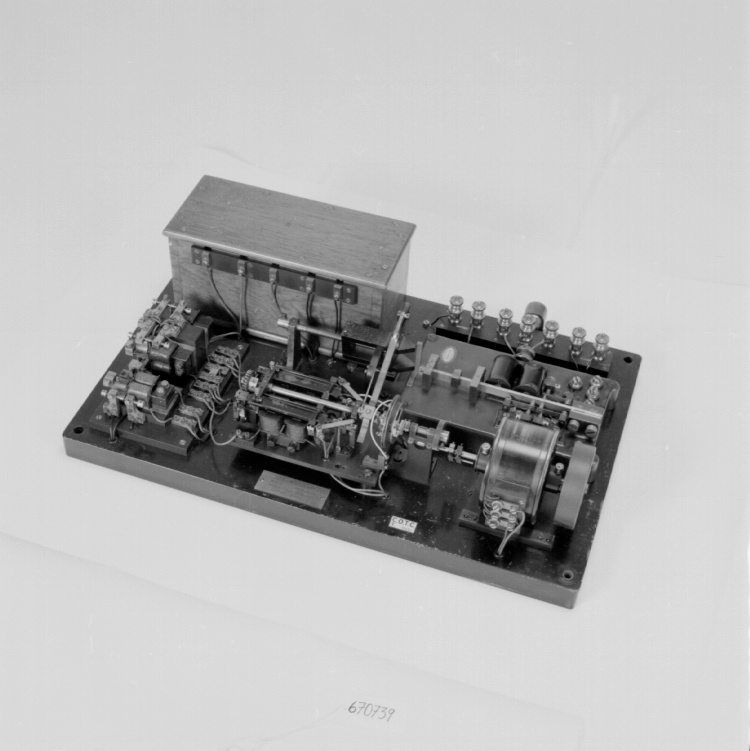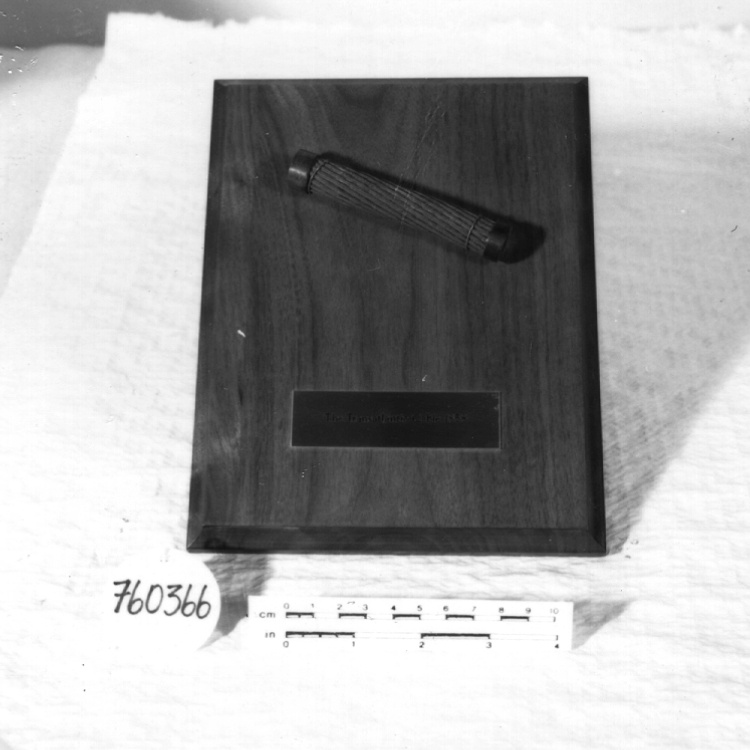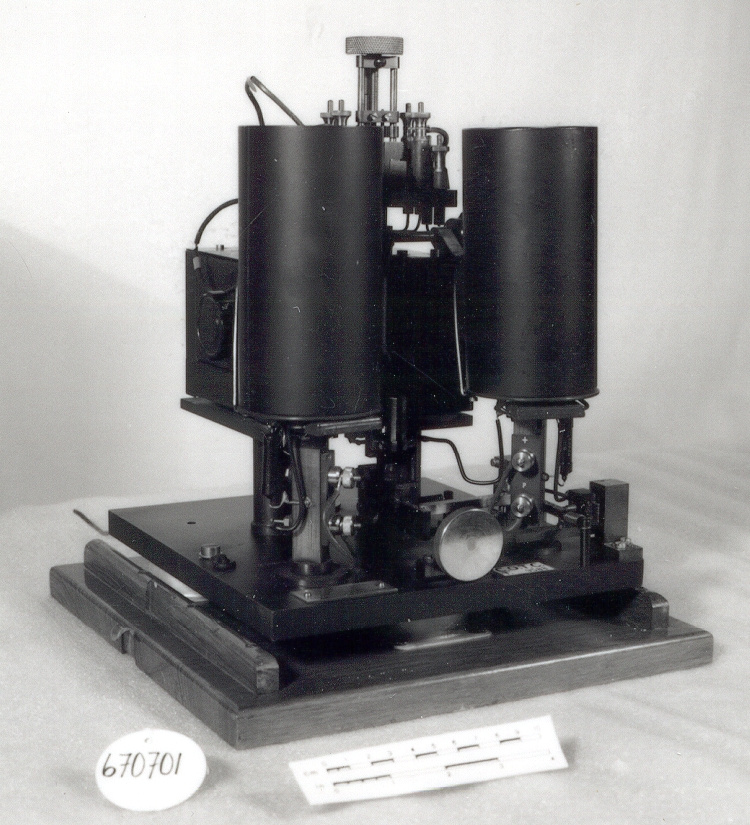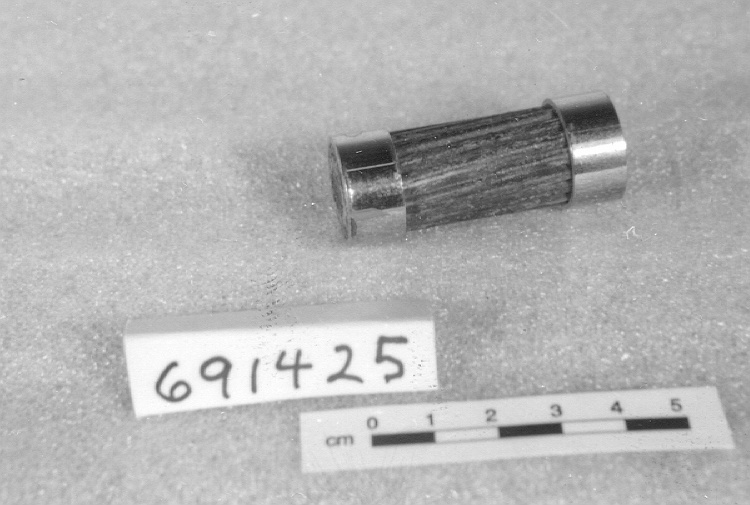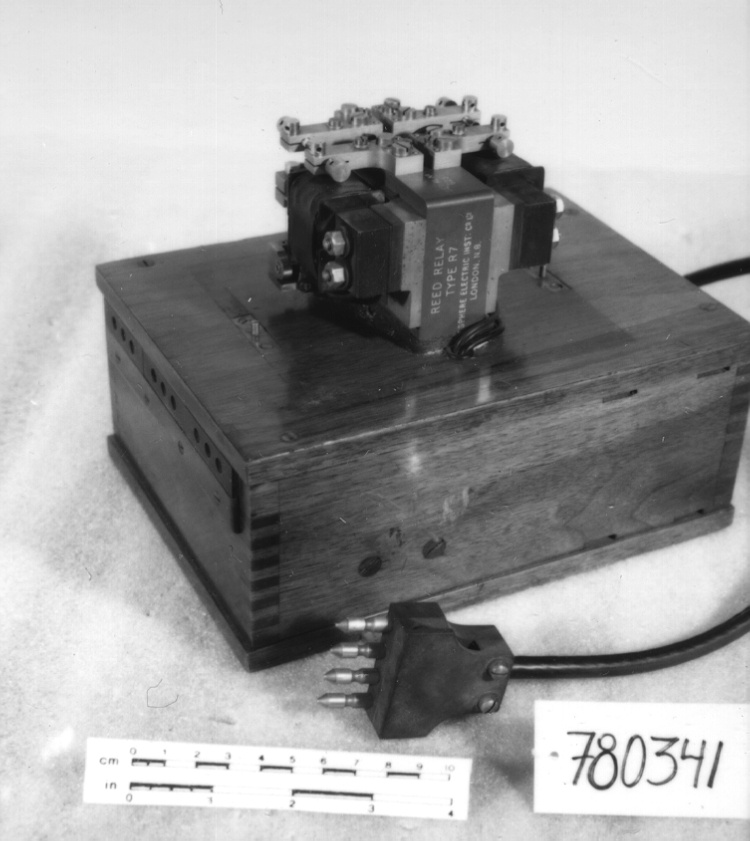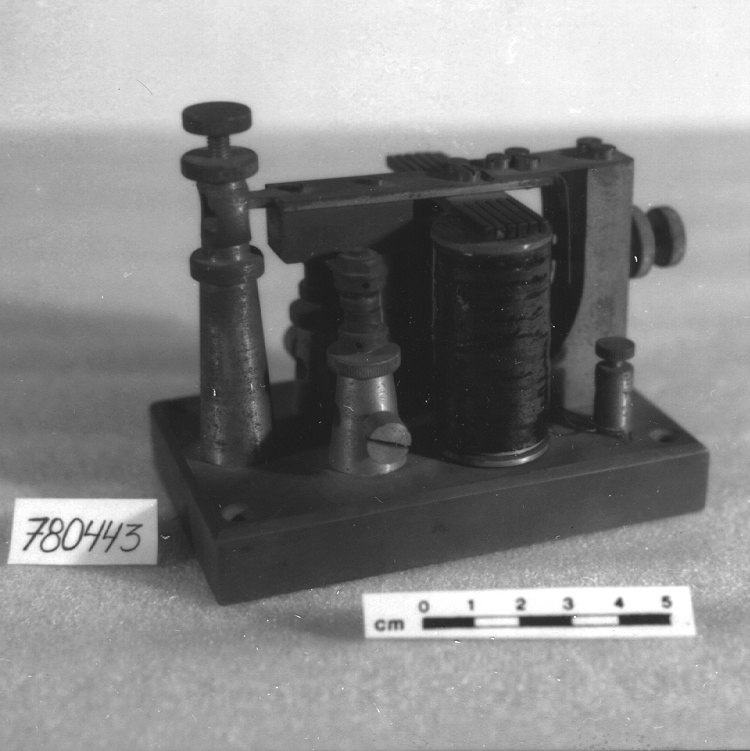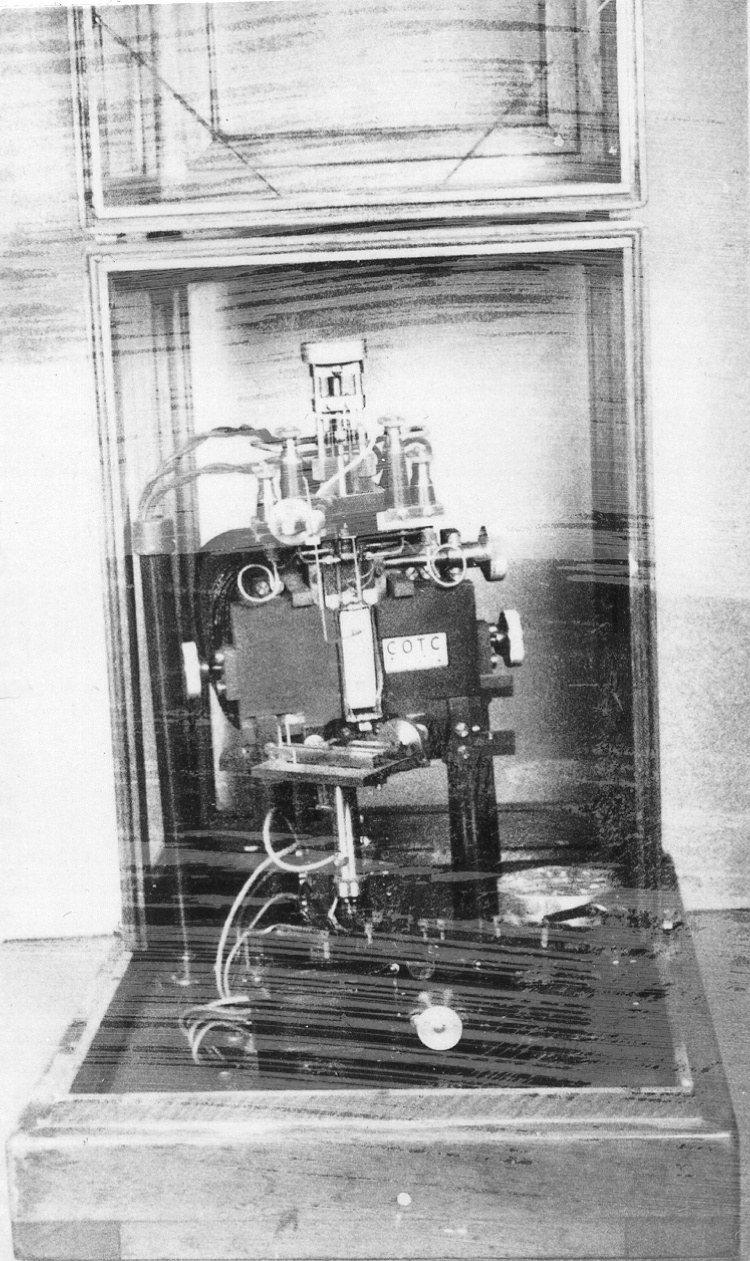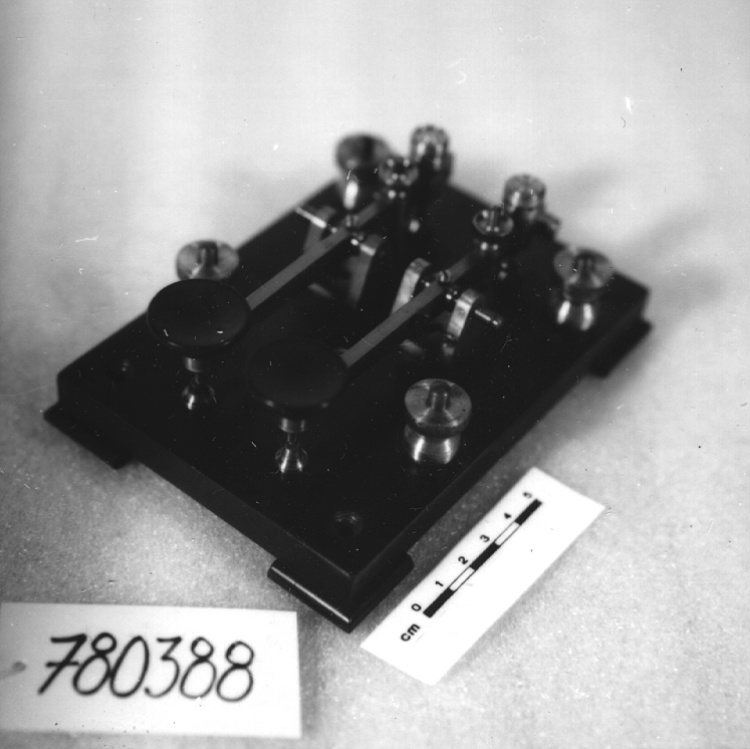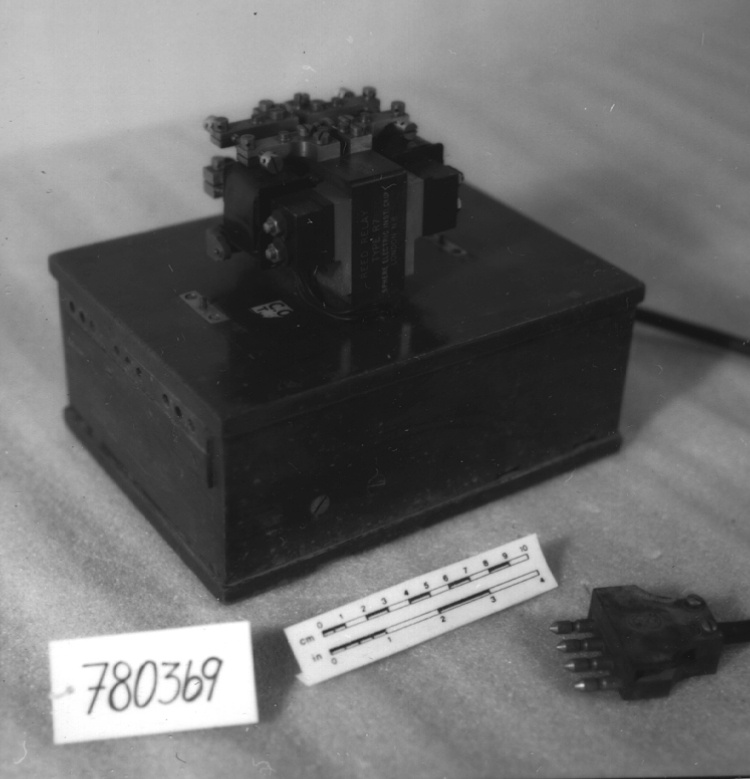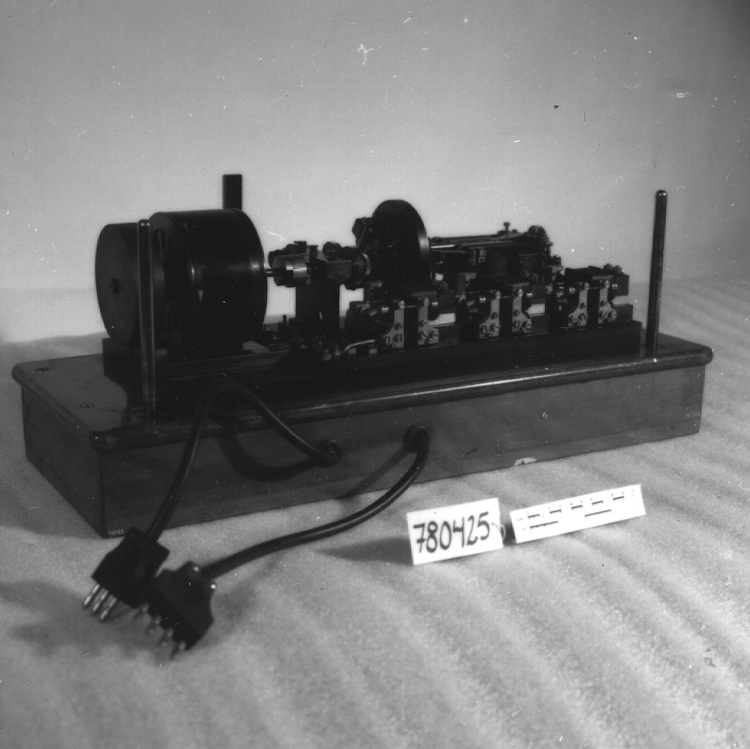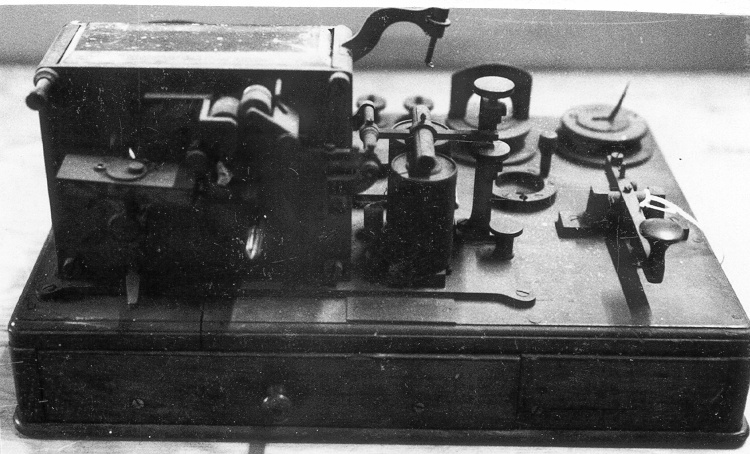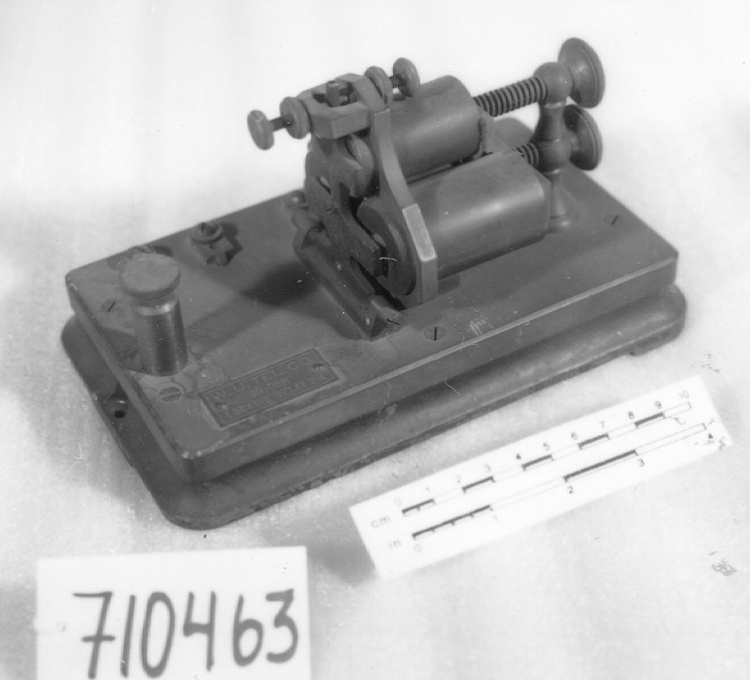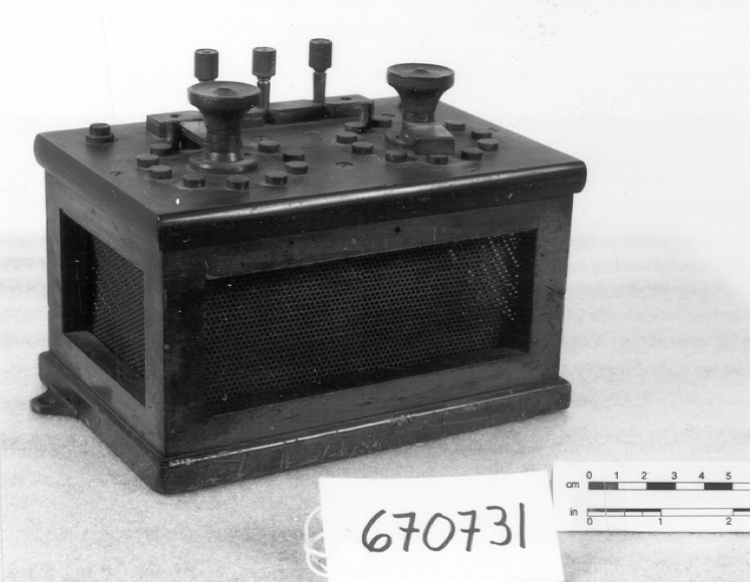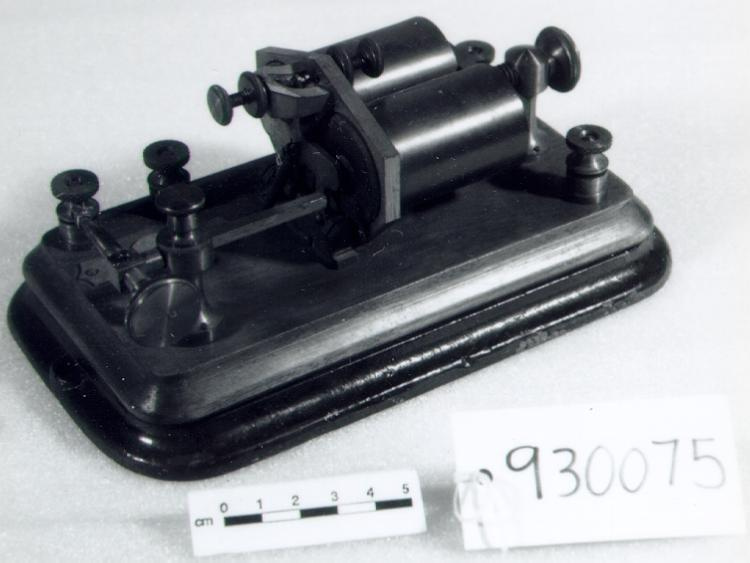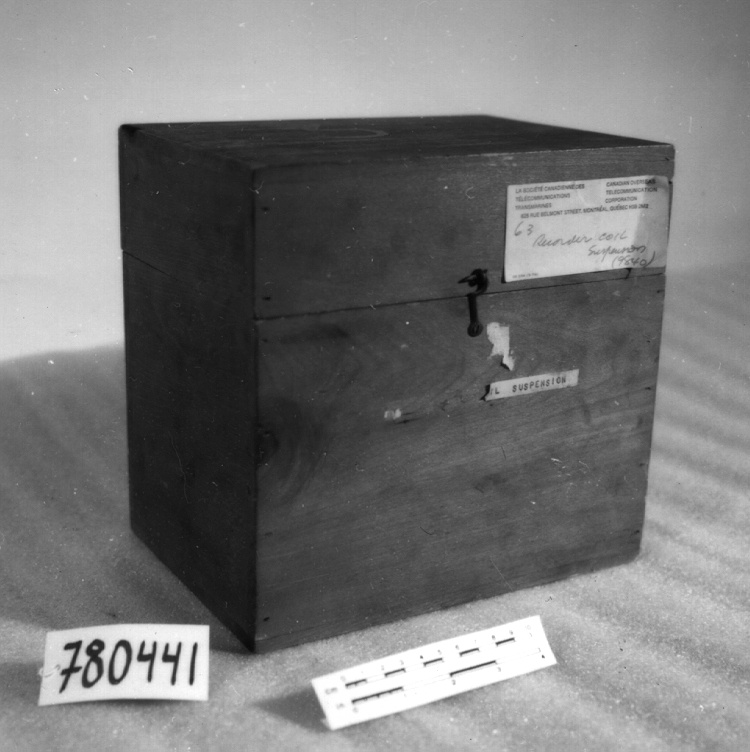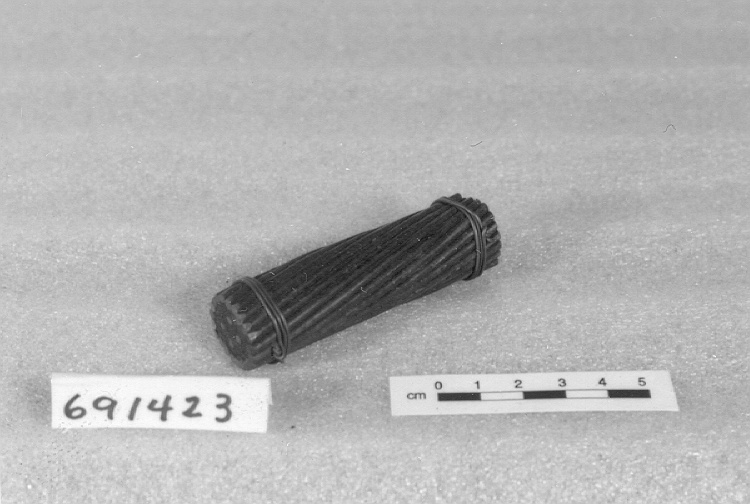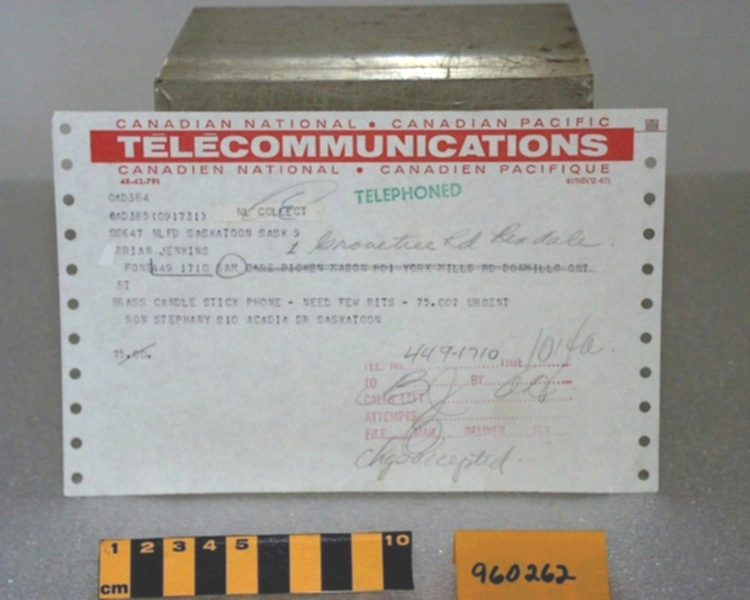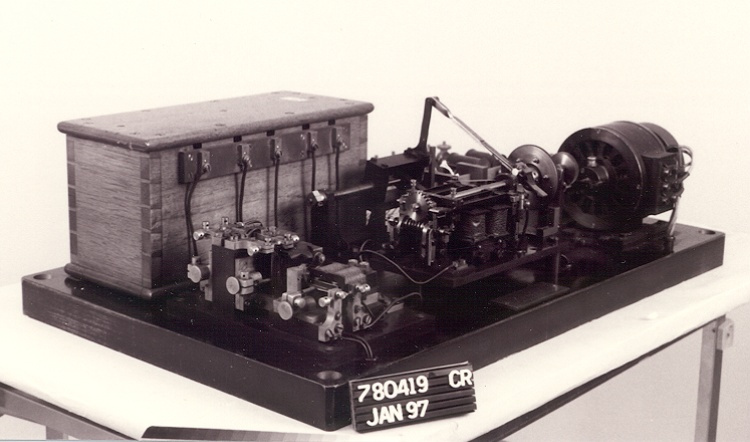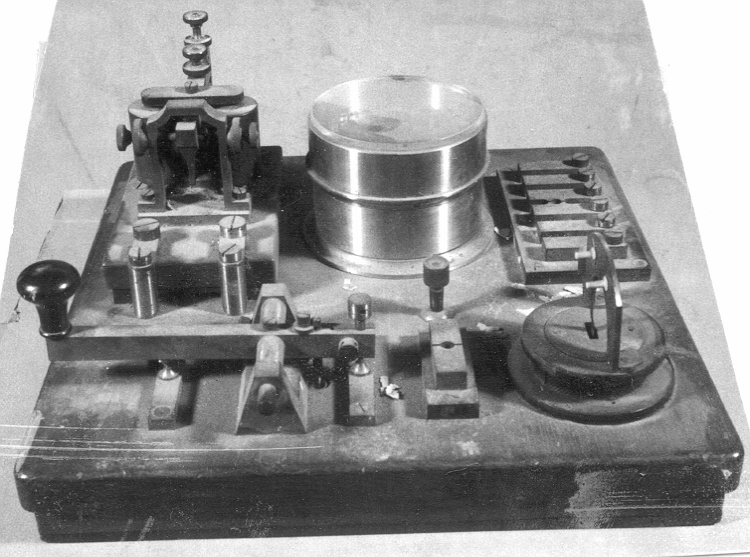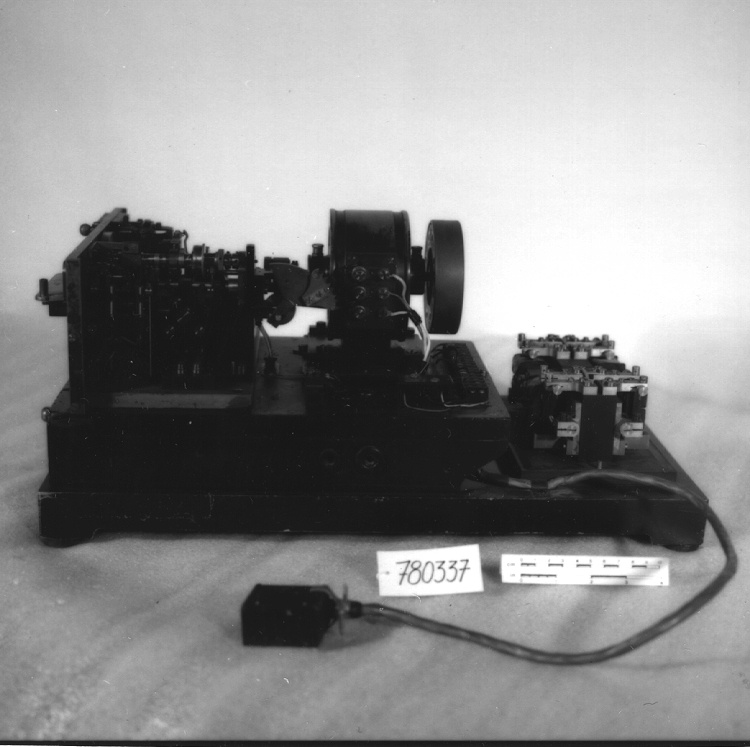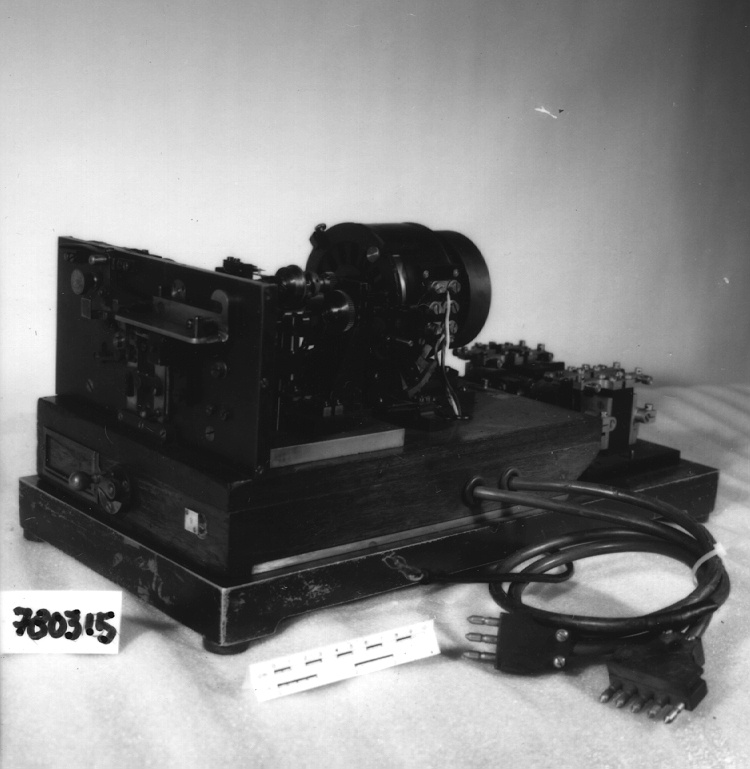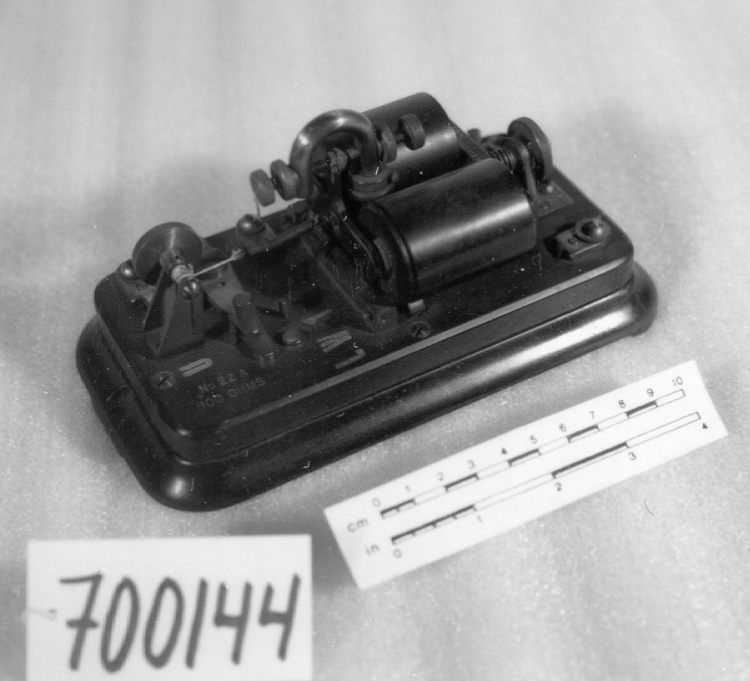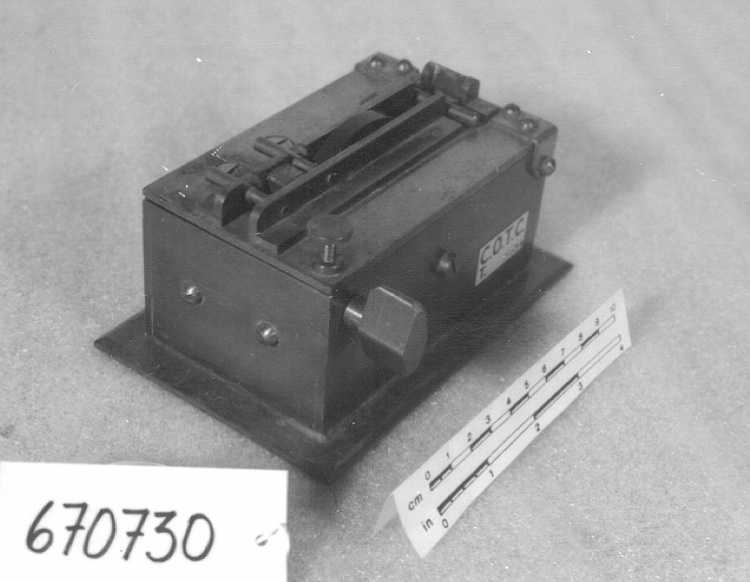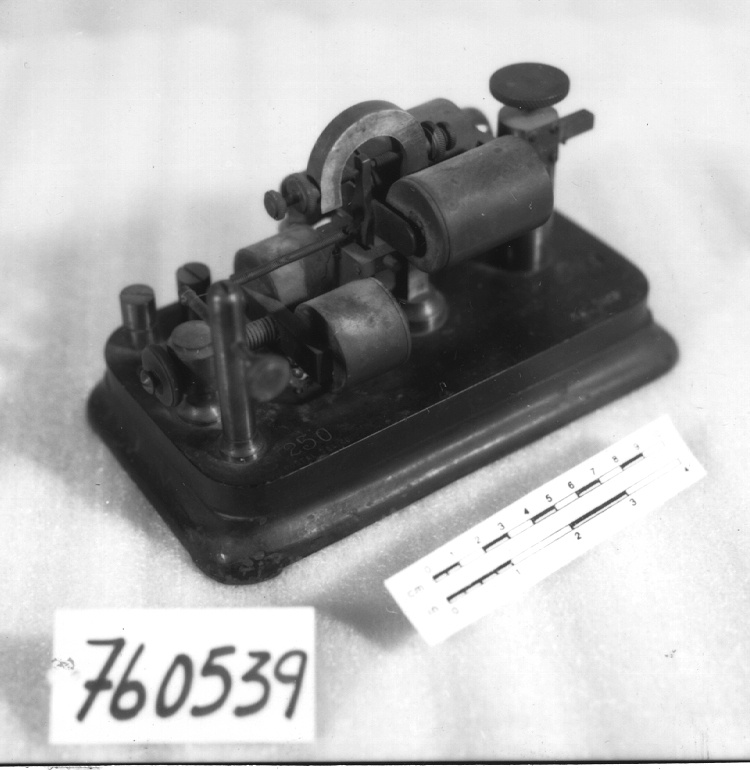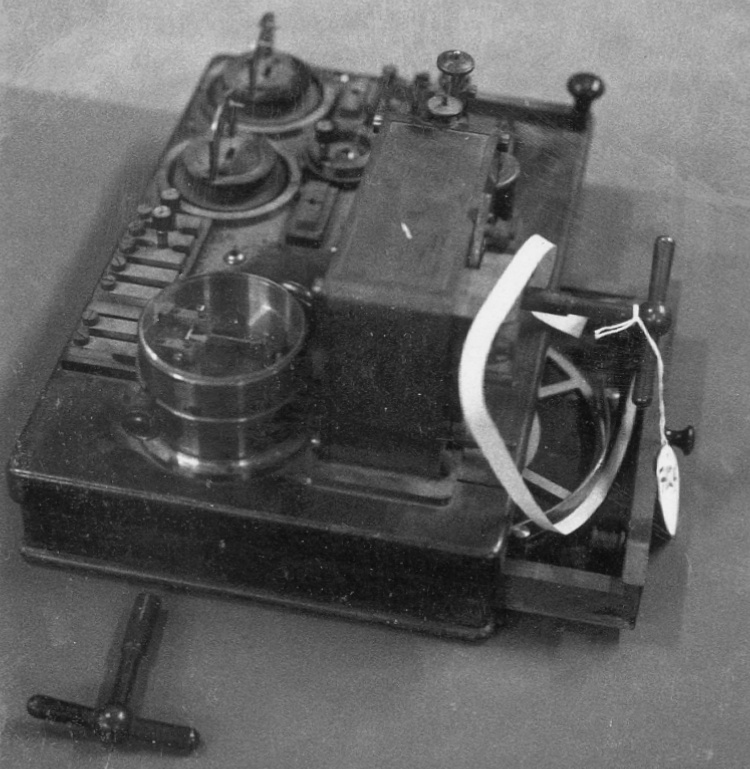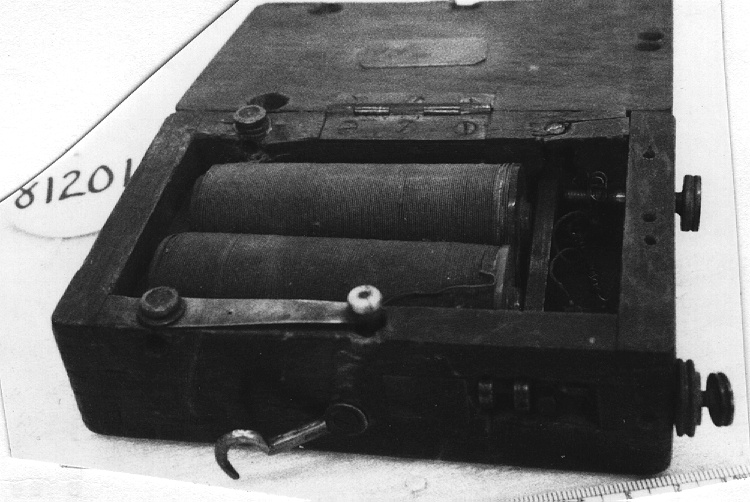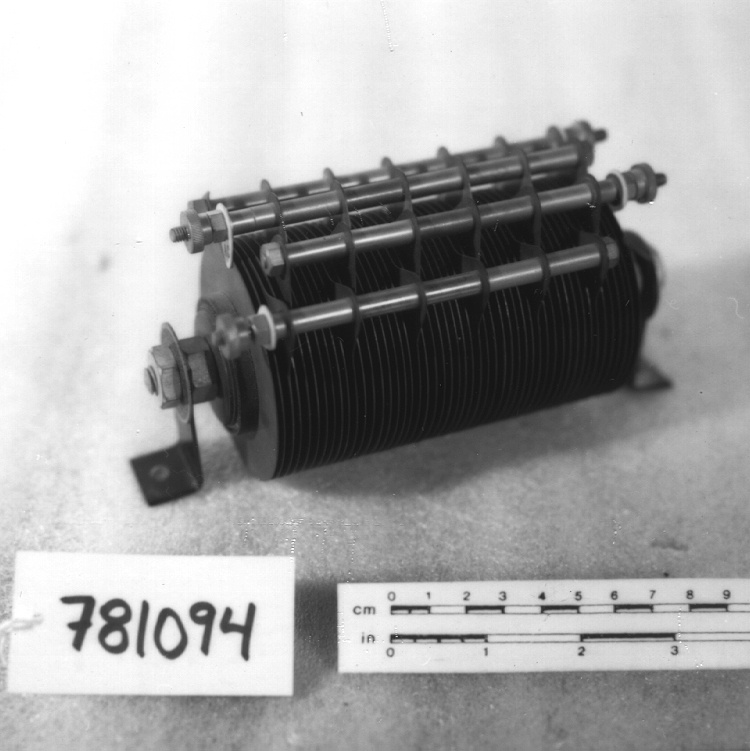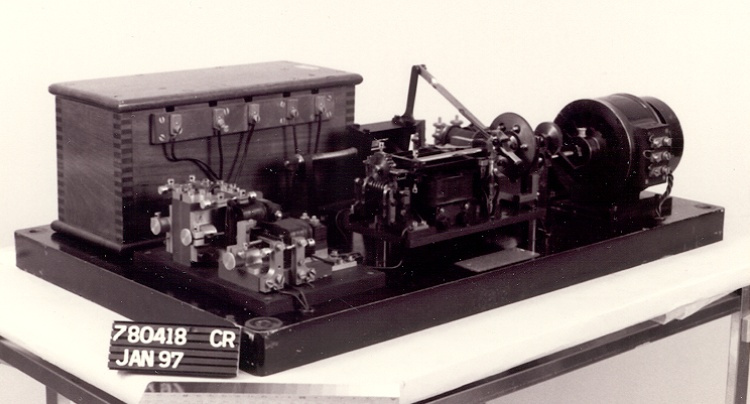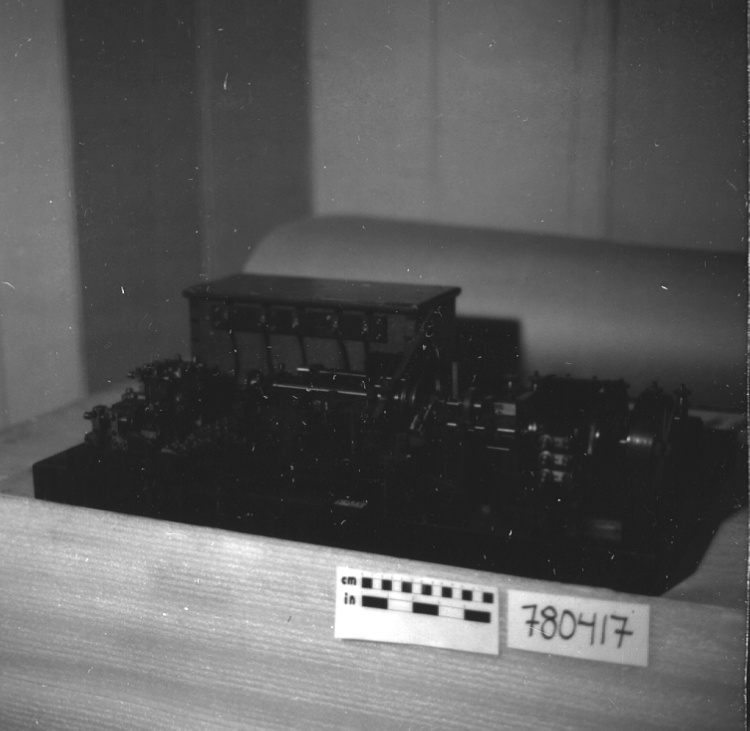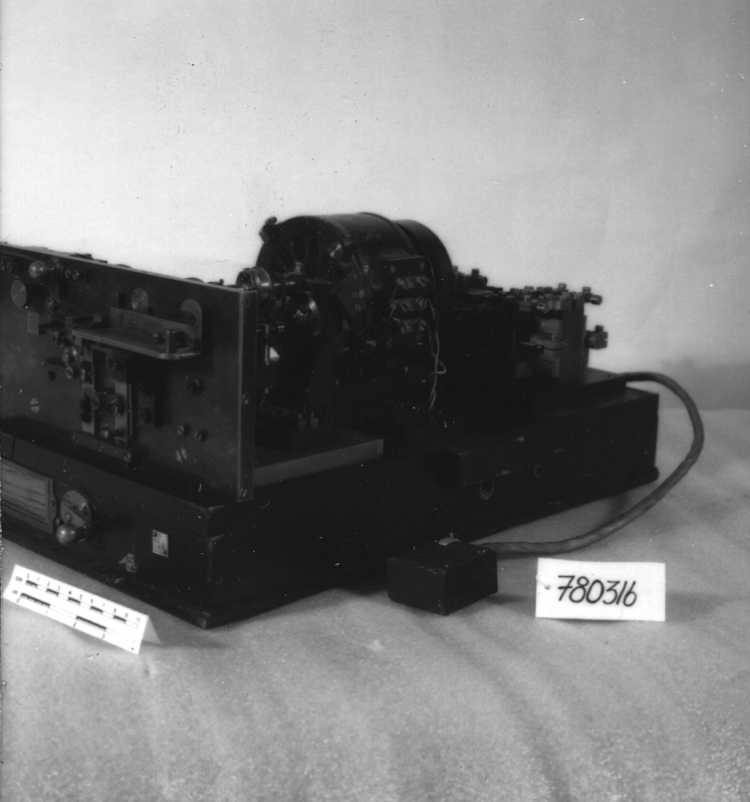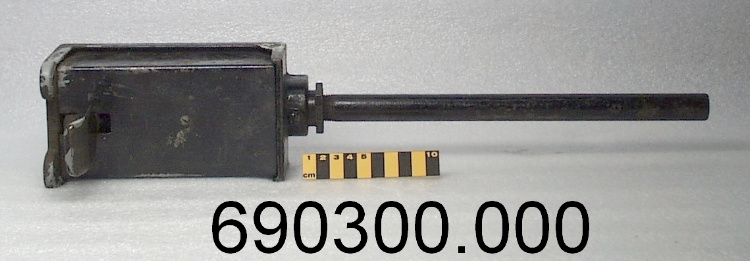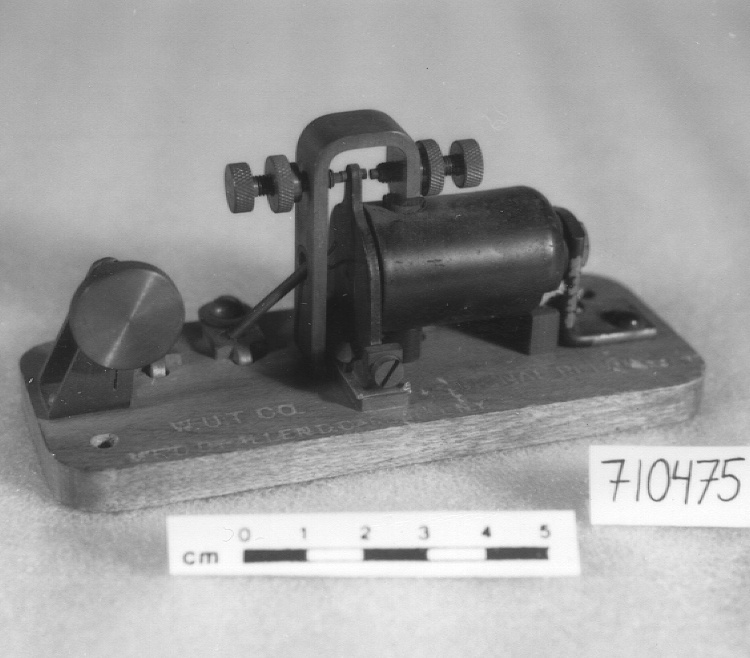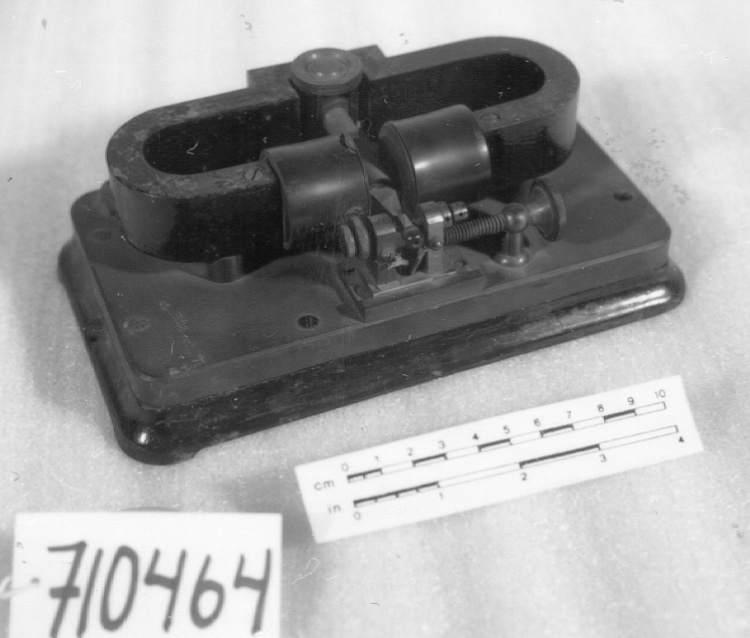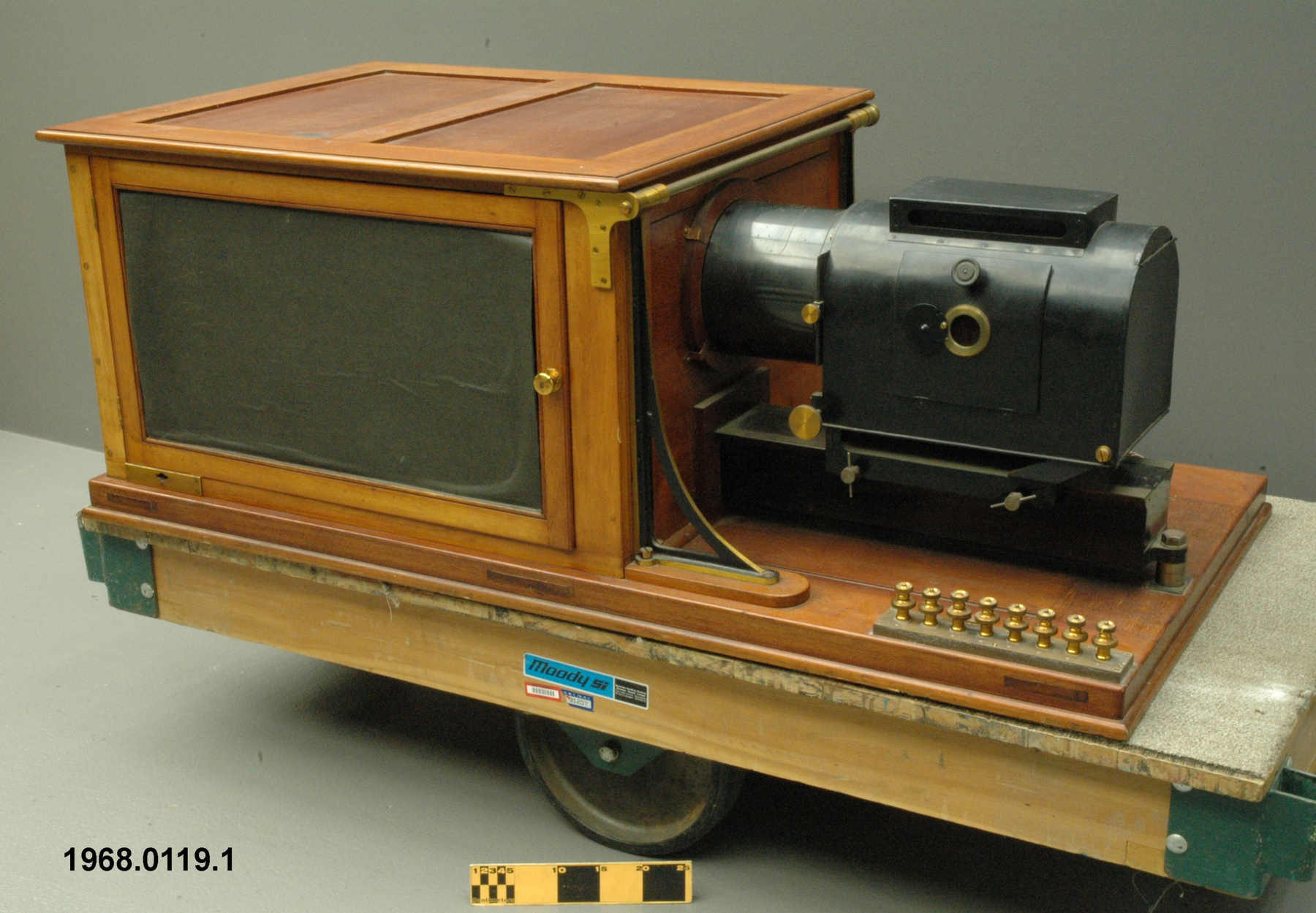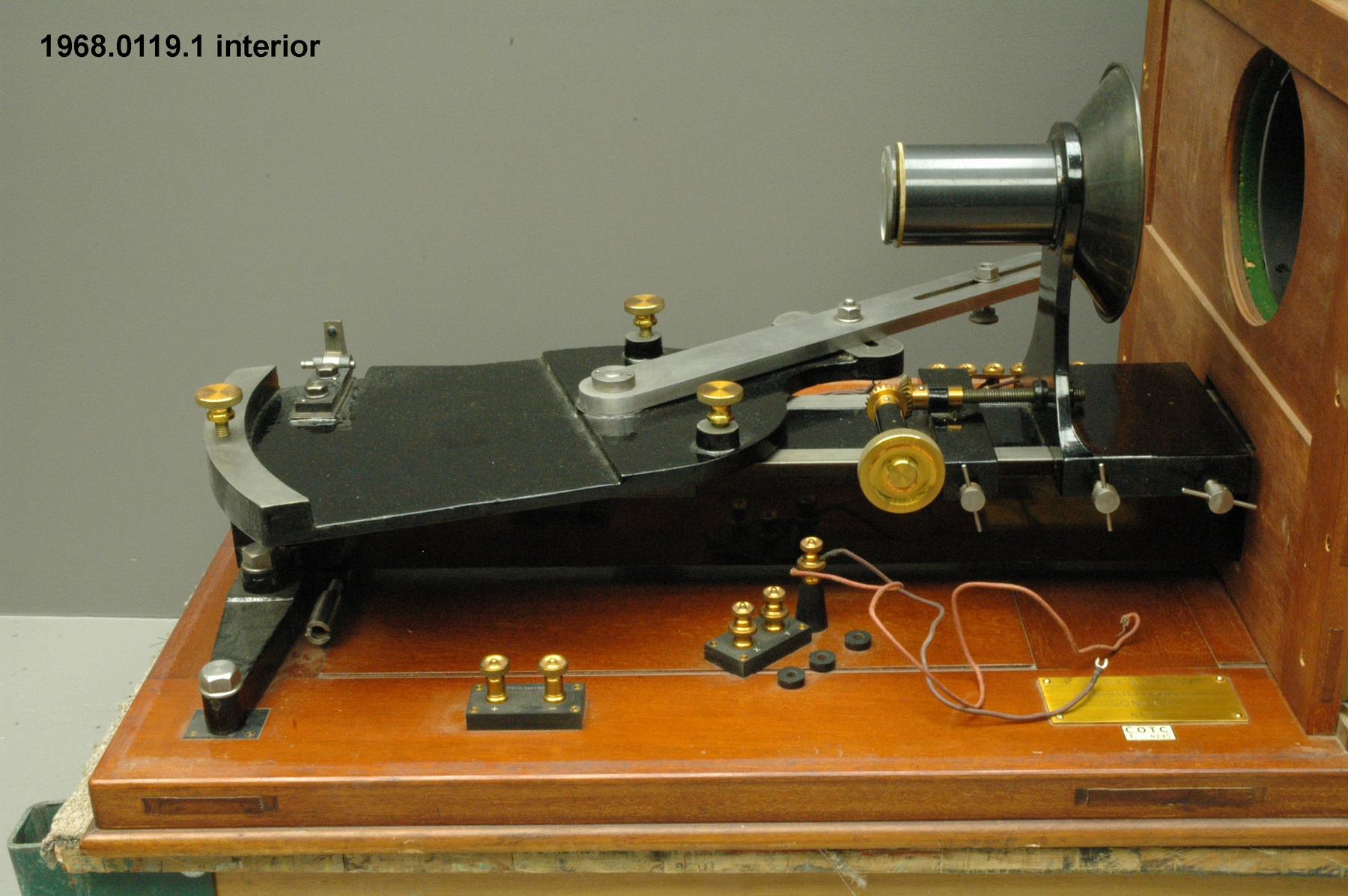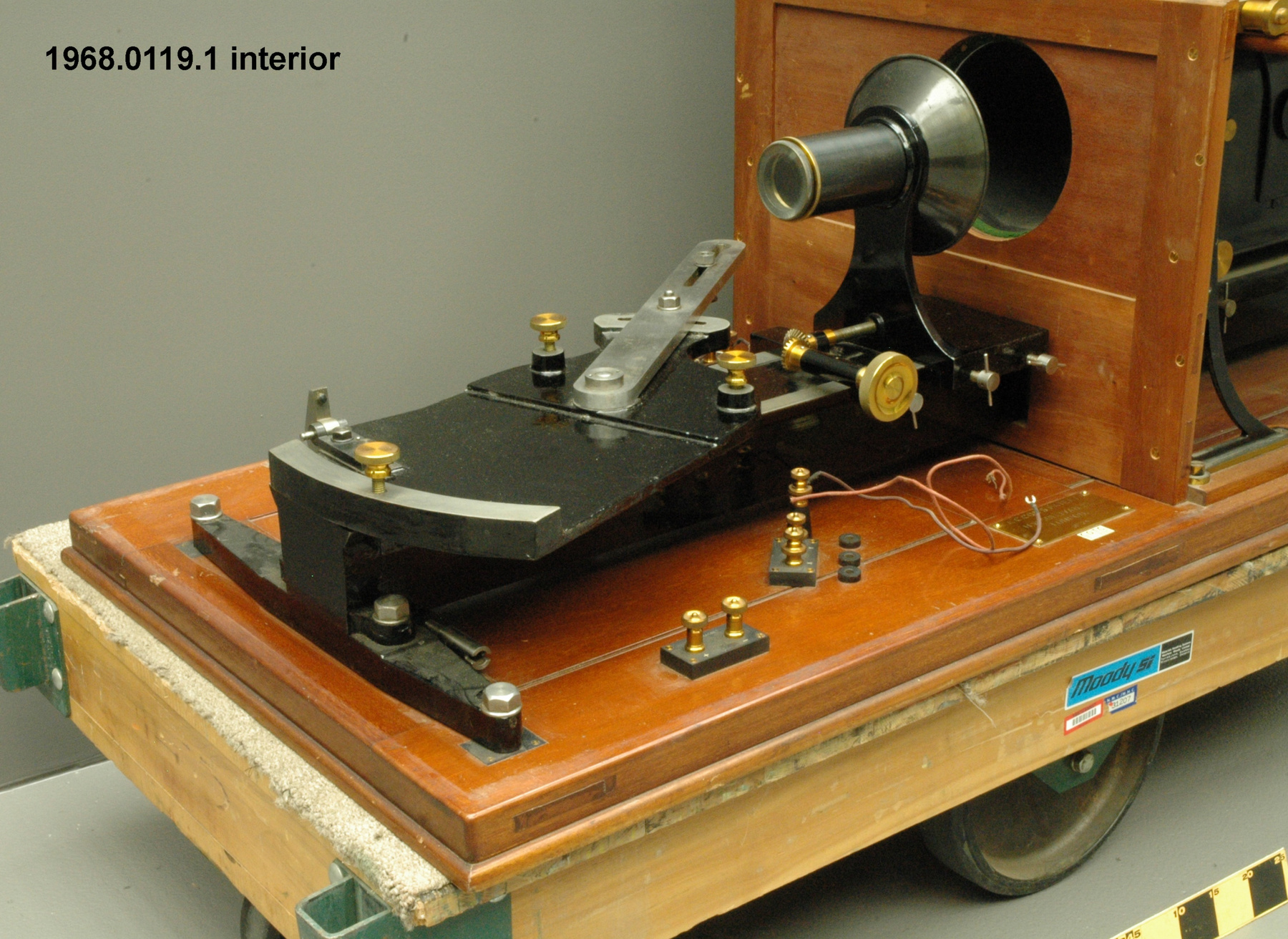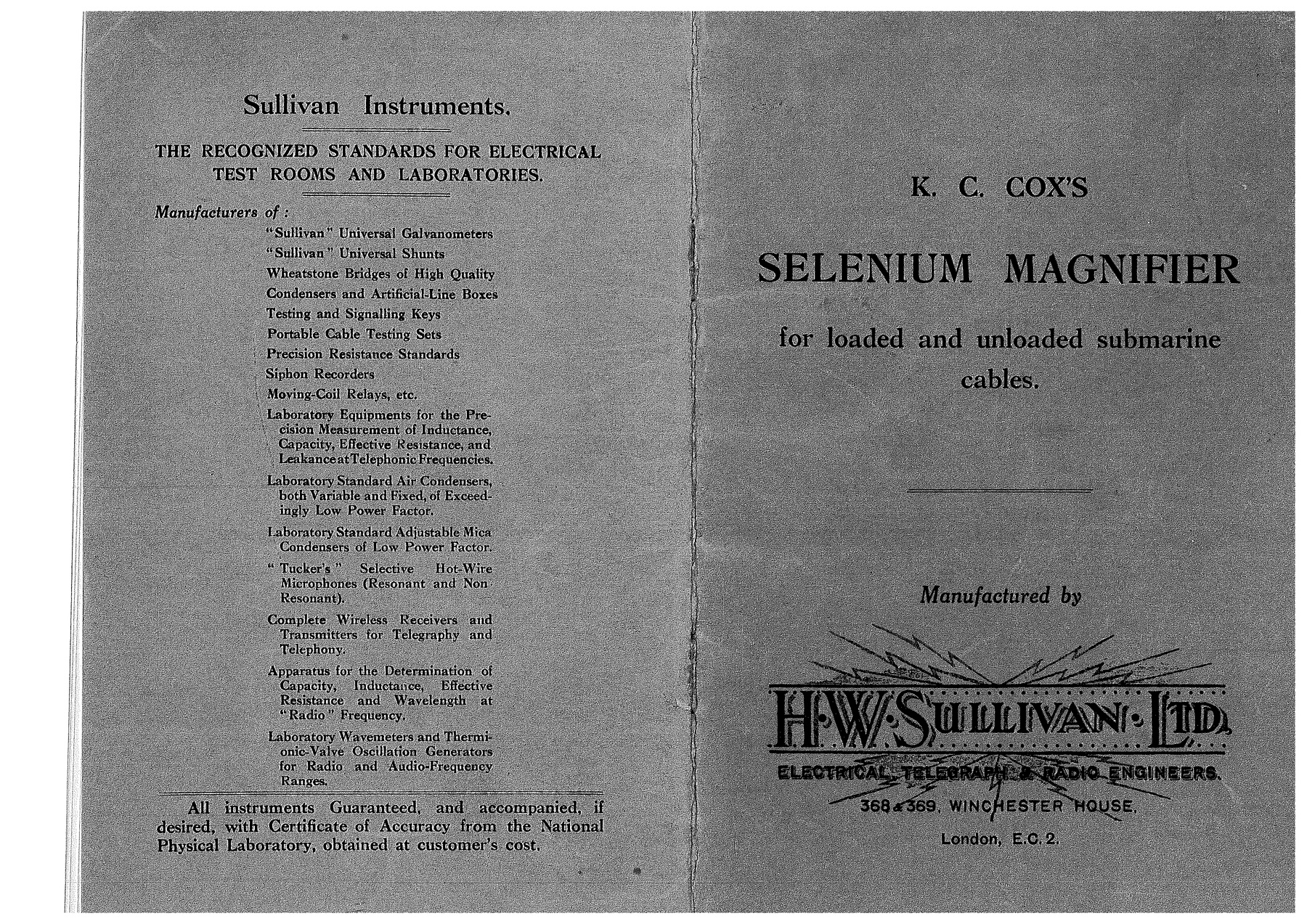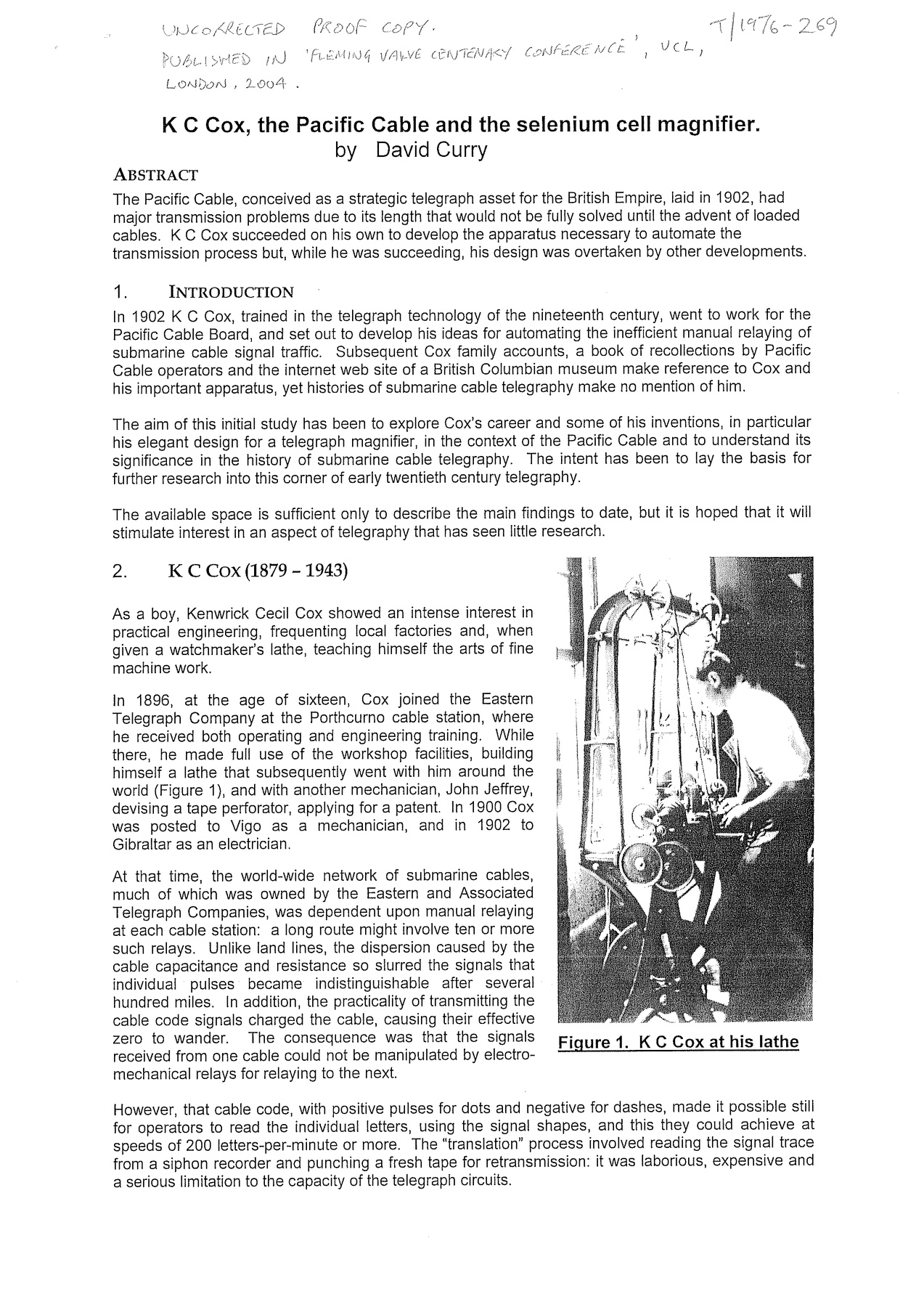Magnifier
Use this image
Can I reuse this image without permission? Yes
Object images on the Ingenium Collection’s portal have the following Creative Commons license:
Copyright Ingenium / CC BY-NC-ND (Attribution-NonCommercial 4.0 International (CC BY-NC 4.0)
ATTRIBUTE THIS IMAGE
Ingenium,
1968.0119.001
Permalink:
Ingenium is releasing this image under the Creative Commons licensing framework, and encourages downloading and reuse for non-commercial purposes. Please acknowledge Ingenium and cite the artifact number.
DOWNLOAD IMAGEPURCHASE THIS IMAGE
This image is free for non-commercial use.
For commercial use, please consult our Reproduction Fees and contact us to purchase the image.
- OBJECT TYPE
- selenium cell/submarine cable
- DATE
- 1917–1930
- ARTIFACT NUMBER
- 1968.0119.001
- MANUFACTURER
- SULLIVAN, H.W. LTD.
- MODEL
- Cox
- LOCATION
- London, England
More Information
General Information
- Serial #
- 24
- Part Number
- 1
- Total Parts
- 16
- AKA
- N/A
- Patents
- N/A
- General Description
- wood and wood veneer casing and wood parts/ brass, tin, and iron parts/ glass windows with paper covering (probably not original)/ fabric covered wiring with wood plug
Dimensions
Note: These reflect the general size for storage and are not necessarily representative of the object's true dimensions.
- Length
- 137.2 cm
- Width
- 68.7 cm
- Height
- 51.2 cm
- Thickness
- N/A
- Weight
- N/A
- Diameter
- N/A
- Volume
- N/A
Lexicon
- Group
- Communications
- Category
- Telegraphy
- Sub-Category
- N/A
Manufacturer
- AKA
- SULLIVAN
- Country
- England
- State/Province
- Unknown
- City
- London
Context
- Country
- Canada
- State/Province
- British Columbia
- Period
- late 1910's to late 1920's
- Canada
-
An artifact used at a submarine telegraph cable station, possibly the Pacific Cable Board's trans-Pacific cable station at Bamfield, BC (the North American end of the Pacific telegraph cable). It was donated by the Canadian Overseas Telecommunications Corp., a Crown corporation formed by the Canadian government in 1950 to operate Canadian overseas telecommunications. COTC took over the Canadian portion of the Pacific Cable including Bamfield station.. After the system was automated and other technological changes occurred, Bamfield station was closed in 1959. In 1969 the cable station property became the Bamfield Marine Sciences Centre (Ref. 5). COTC became Teleglobe Canada in 1975 and in 1987 was sold to a private company. The first successful Atlantic cables, built in 1866 by the Atlantic Telegraph Co., ran from Heart's Content, NL to Valentia, Ireland. The first Pacific cable was built by the Pacific Cable Board, a joint venture of Britain, Canada, Australia and New Zealand. Completed in 1902, it ran from Bamfield on Vancouver Island to Fanning Island, south of Hawaii, then to Fiji where it branched to New Zealand and Australia. British telegraph electrician and inventor K.C. Cox (1879-1943) began working for the Eastern Telegraph Co.at the Porthcumo station in Cornwall in 1896. In 1902 he joined the newly completed Pacific Cable as station electrician at Bamfield, BC. From then until 1919, Cox worked successively at Bamfield, Fanning Island and Norfolk Island; in 1921 he was posted to Auckland, NZ and finished his career as station manager at Bamfield, retiring in 1933. In his spare time, Cox developed telegraph apparatus such as a complete system for automatic translation of telegraph signals which included his magnifier. The system operated successfully at stations in the southern section of the Pacific Cable in the early 1920s. Stations of the northern cable also had Cox magnifiers but in the late 1920s, the Pacific Cable Board chose a different system. In 1929 the Pacific Cable was taken over by Imperial and International Communications Ltd., forerunner of Cable and Wireless Ltd (Ref. 1). - Function
-
An instrument used in telegraphy for the magnification and increase of submarine cable signals. - Technical
-
An example of a submarine cable signal magnifying device developed by an employee of the Pacific Cable board and used at its trans-Pacific stations from the late 1910's through the 1920's. It was manufactured commercially by H. W. Sullivan Ltd. of London. According to David Curry, grandson of the inventor, this example may the only or most complete one in existence [Corr. from D,. Curry. 10/30/06 in Supp. Info.]. The operation of submarine telegraph cables presented problems not experienced in the use of land lines. The conductive quality of the sea water in which they were immersed increased their capacitance and the length of ocean spanning cables weakened the signals. Various pieces of equipment were developed to solve these problems, including William Thompson's mirror galvanometer and siphon recorder, automatic transmission devices, signal re-transmission or relay instruments and signal magnifiers (Ref. 7). The selenium cell magnifier was another device for improving submarine telegraph signals. Selenium is a substance with marked photosensitive properties and a resistance that varies inversely with illumination (Ref.. 4). In 1914, K.C. Cox applied for two patents for his selenium cells for use in telegraphy and the magnifier itself was patented in 1917. The arrangement was for a collimated beam of light to be split by a slit screen into a series of bars, reflected off a mirror galvanometer onto a selenium cell. This cell was a series of long, very thin strip elements of selenium. The light bars caused changes in the resistance of the selenium elements which were connected to a Wheatstone bridge; robust moving coil relays drove an interpolator which broke the signal into the appropriate number of pulses. The regenerated signal could then be used to perforate a tape or be transmitted directly. Cox also developed other submarine telegraph station equipment such as an interpolator and a reperforator. By 1926, the Pacific cable station on Norfolk Island "had been converted to an automatic relay station. All the apparatus there had been invented, patented and manufactured in England for K.C. Cox, a very clever Pacific Cable Board engineer...One of the chief features was the Cox magnifier which took the incoming signals and increased their amplitude to such an extent that they could operate the relay" (Ref. 5). - Area Notes
-
Unknown
Details
- Markings
- incised lettering on interior brass plate reads 'K.C. COX'S PATENT/ H.W. SULLIVAN LTD./ LONDON/ No 24'/ incised lettering on contact bar reads 'FIELD MAGNET', 'Se BATTERY', RHEOSTAT', 'RELAY'/ interior label reads 'C.O.T.C./ T. 8737'
- Missing
- unknown
- Finish
- brown stained and coated wood casing and base/ glossy black painted projector casing and parts/ dark gold coloured metal parts/ metallic parts/ colourless transparent glass covered with black paper/ brown wire covering
- Decoration
- N/A
CITE THIS OBJECT
If you choose to share our information about this collection object, please cite:
SULLIVAN, H.W. LTD., Magnifier, between 1917–1930, Artifact no. 1968.0119, Ingenium – Canada’s Museums of Science and Innovation, http://collections.ingeniumcanada.org/en/item/1968.0119.001/
FEEDBACK
Submit a question or comment about this artifact.
More Like This
